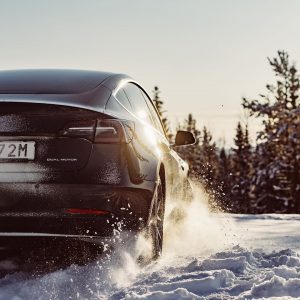After the thrill of reaching the Arctic Ocean in Tuktoyaktuk, my return journey south from Inuvik was expected to be less dramatic—but as with any true EV road trip adventure, surprises still lurked around every bend of the Dempster Highway.
If you’re just joining me now, be sure to check out Part 1 of my EV road trip to the Arctic and the amazing Alaska Marine Highway ferry segment. Here’s how the way back unfolded—and what you need to know if you’re planning to drive the Dempster Highway in an electric vehicle.
Inuvik to Eagle Plains: A Tough Start and a Charging Lifeline
After a celebratory night in Inuvik, I awoke to a text from a fellow overlander in a Rivian I’d met earlier on the road. His EV charger had stopped working overnight, and he needed to use the one I was plugged into at Arctic Chalet Suites.

I had only charged to 90% and planned to top up to 100% in the morning. He let me finish charging. He did have a backup plan—a small generator that could put out about 4 kW, but it was painfully slow. I joked that he might end up being my AMA roadside assistance given the tire trouble and range anxiety I’d had on the way up.
Once I was topped up, I made way so he could start his own session. This kind of charger-juggling is part of the reality of EV travel this far north—especially along the Dempster Highway—and I suspect it’ll only become more common as more EVs make the trip.
As he charged, I headed south toward Eagle Plains, not too worried since this stretch is shorter than the next, but range anxiety still lingered.

My goal was to skip charging in Fort McPherson this time, but the Dempster Highway conditions had other plans. I was burning battery at a much higher rate than expected.

It was an odd one as the conditions were great with no wind. Was it the mud I picked up in Tuktoyaktuk that I missed washing off? Possibly. Despite it being a Sunday, I made the call to stop at LNJ Contractors in Fort McPherson to top up again. I wasn’t too concerned though and if it was closed, I would continue on.
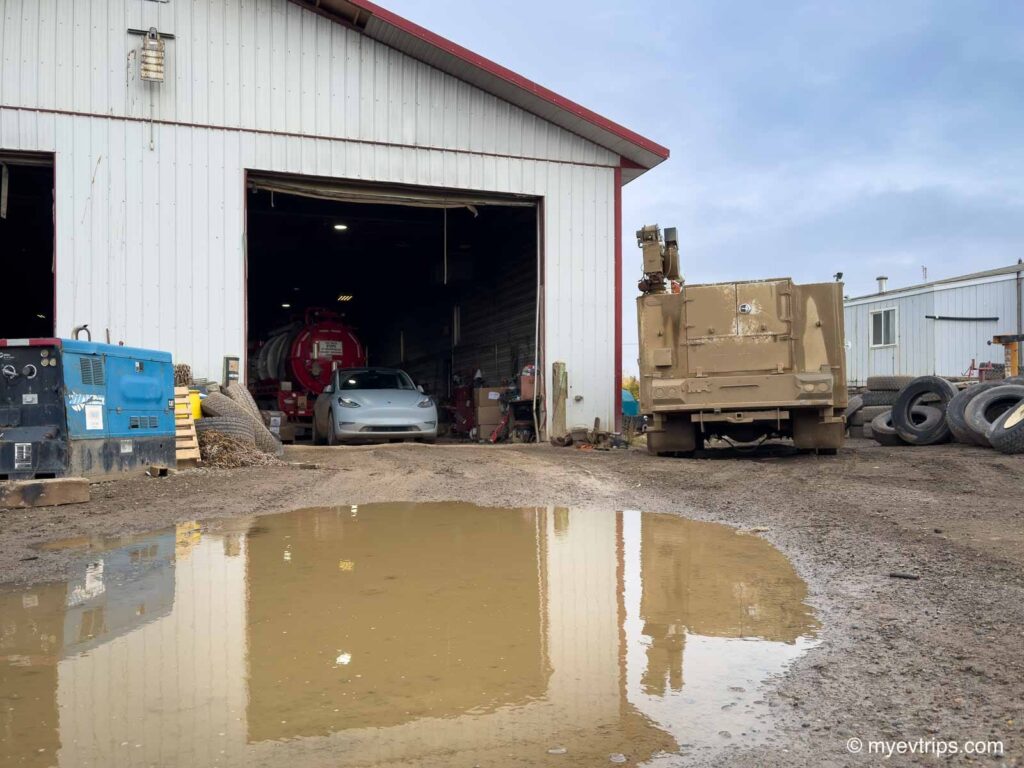
Surprisingly, the garage bay with the 14-50 outlet was open and unattended. I plugged in and left a note with my contact info and offer to pay. They kindly followed up Monday and charged me $60.
Turns out, that charge saved the day.
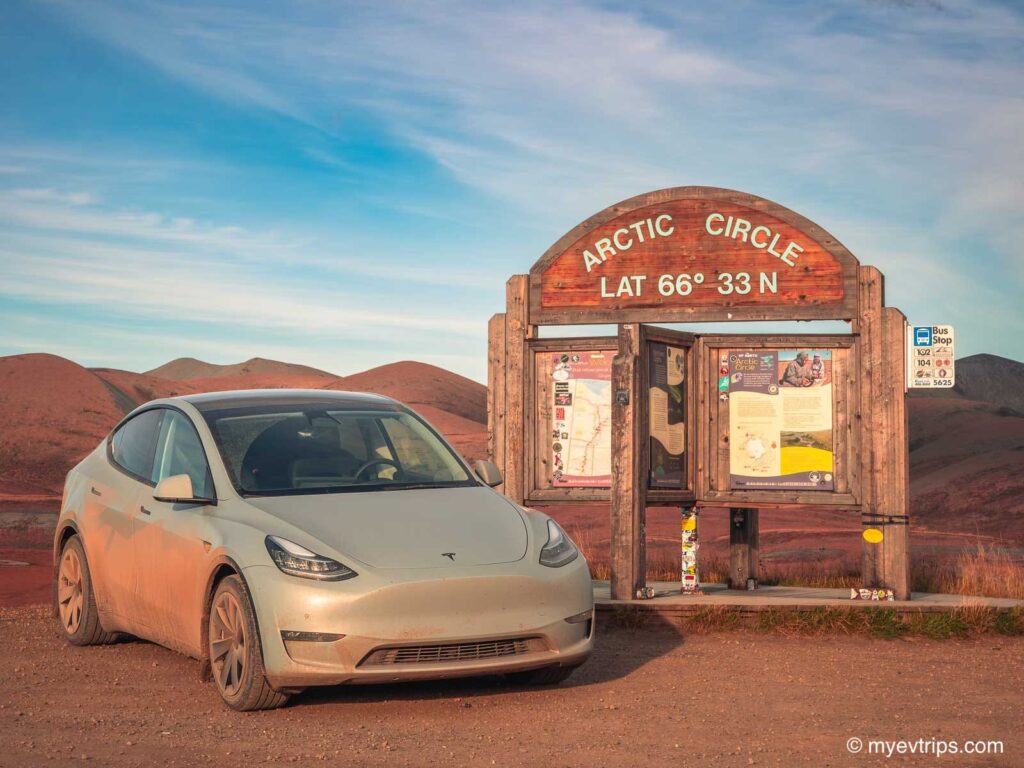
Without that top-up, I would have been stranded (or at least waiting on my Rivian roadside assistance)—despite seemingly having enough battery when I left Inuvik. The Dempster can be deceiving.
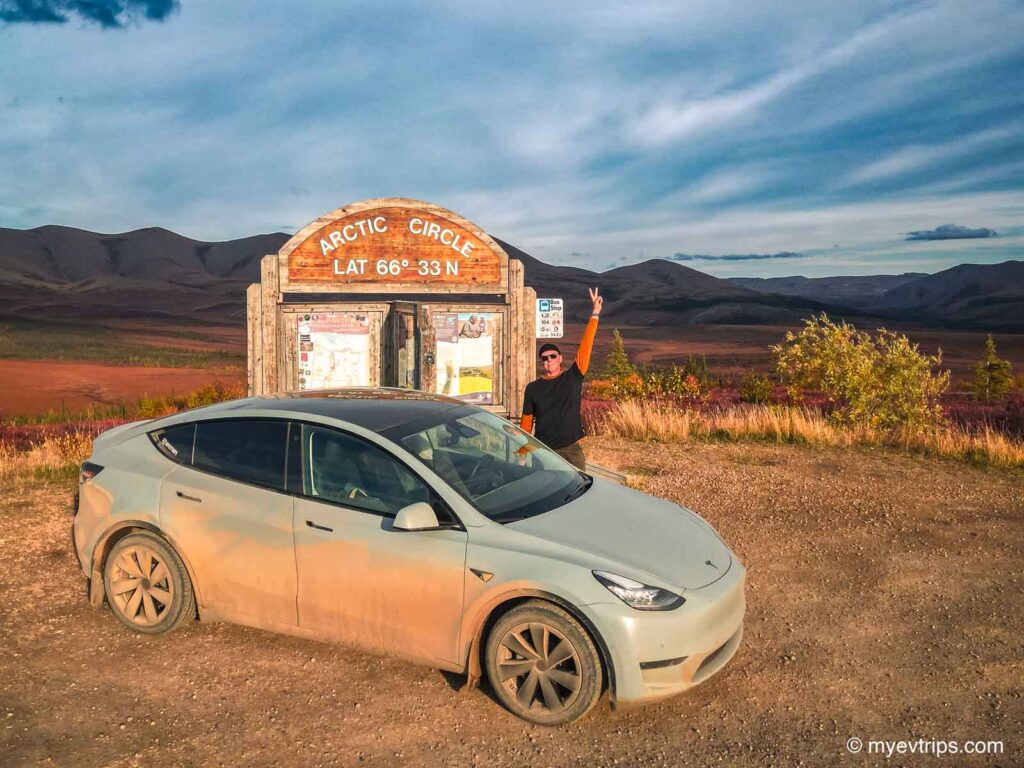
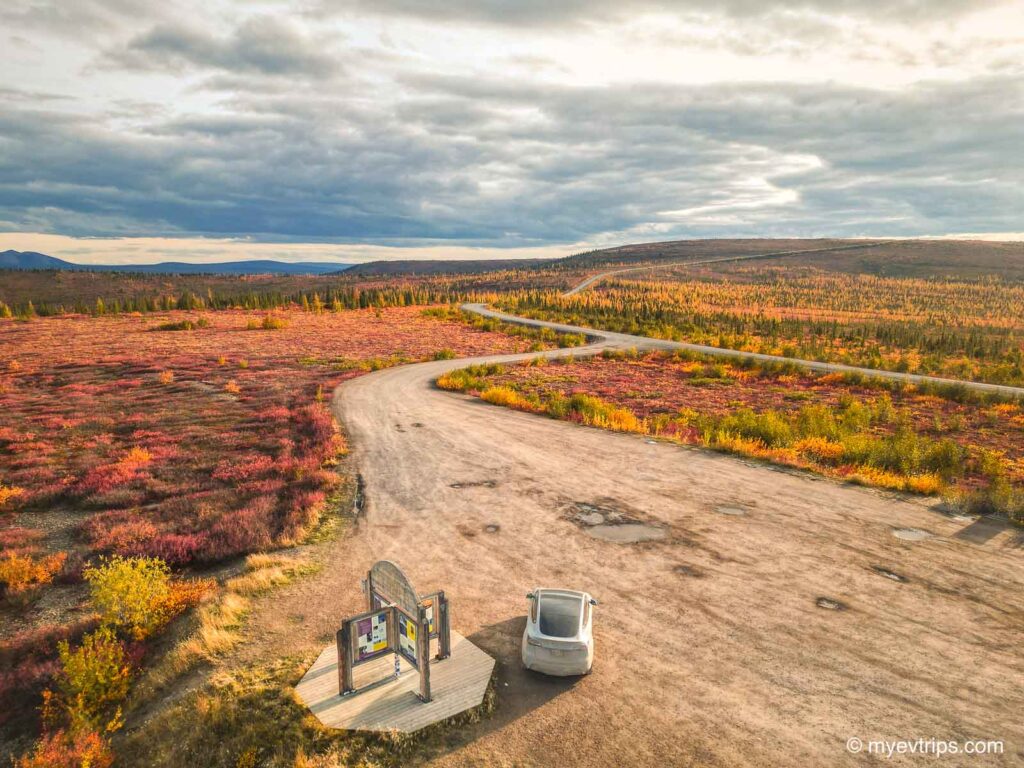
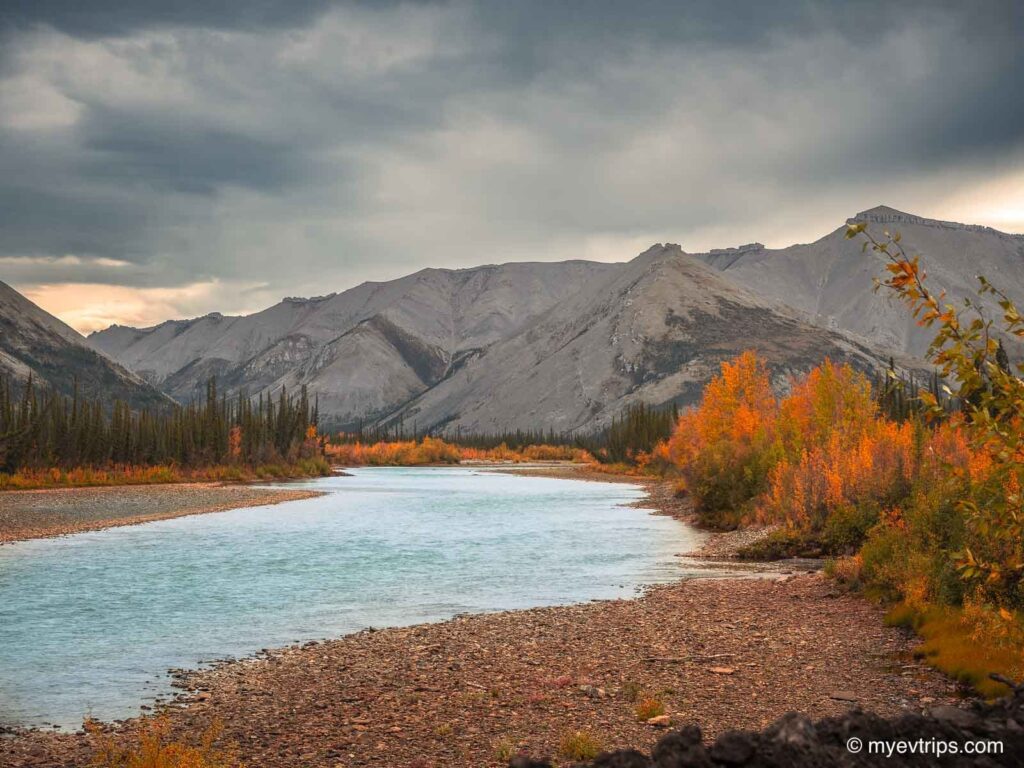
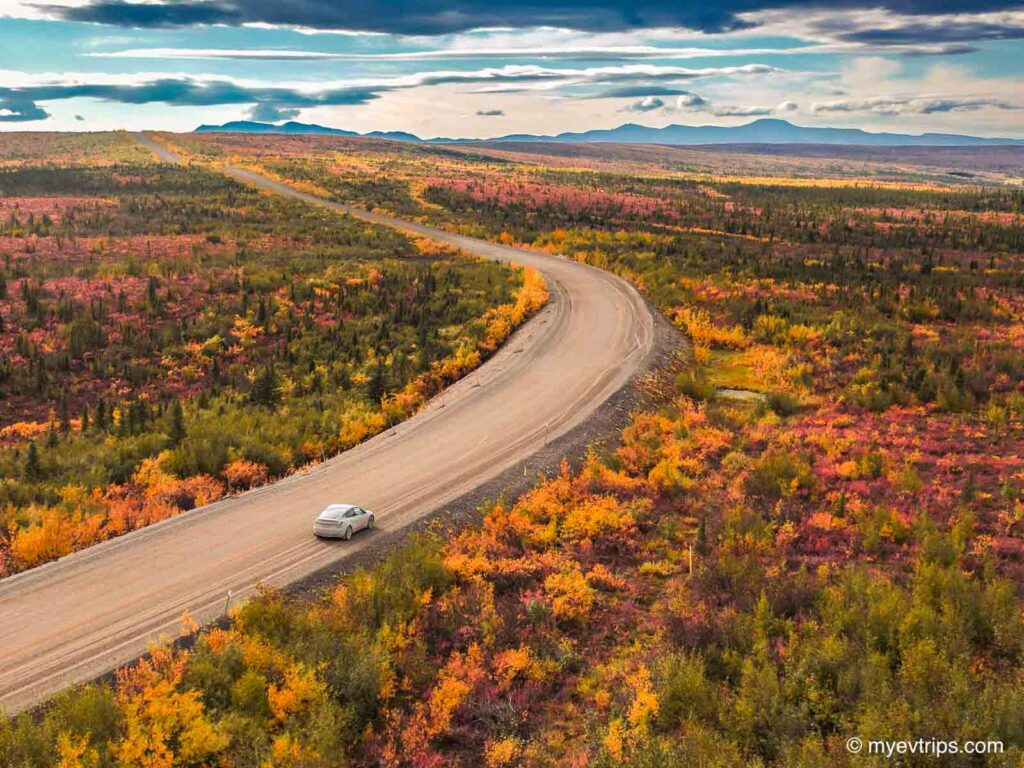
When I finally reached Eagle Plains, I rolled in with a sliver of charge left and began topping up on the destination charger outside.
Soon after, the Rivian crew arrived with 0% charge left! They were just as shocked by the range drop—confirming it wasn’t just me.
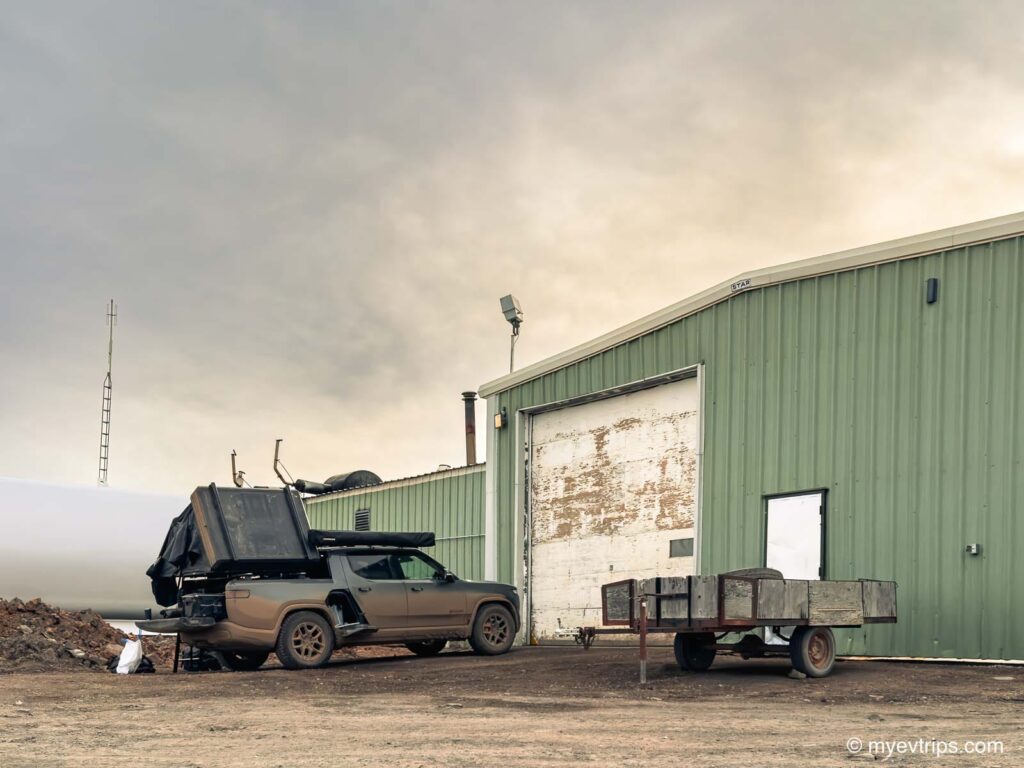
We coordinated charging using a 50 amp plug inside the garage (a previous workaround when the outdoor charger was broken). The shop staff, though full of jokes, were kind enough to help me get plugged in inside.
Here’s the catch: I didn’t have a room. So I ended up sleeping in my Tesla inside the garage—right beside a roaring generator pumping heat into the space. It was 35°C, humid, and full of fumes.
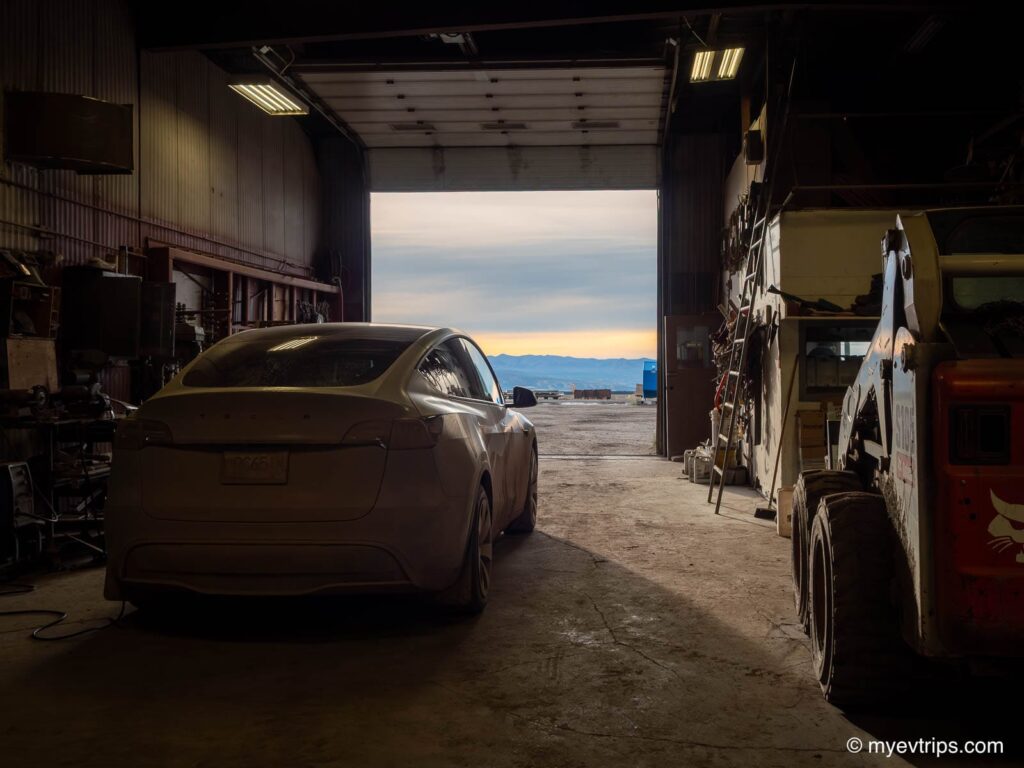
While getting some fresh air before bed, the northern lights came out in full colour—almost like a reward for surviving the day’s chaos. It was a pretty magical sendoff before crawling into the car.

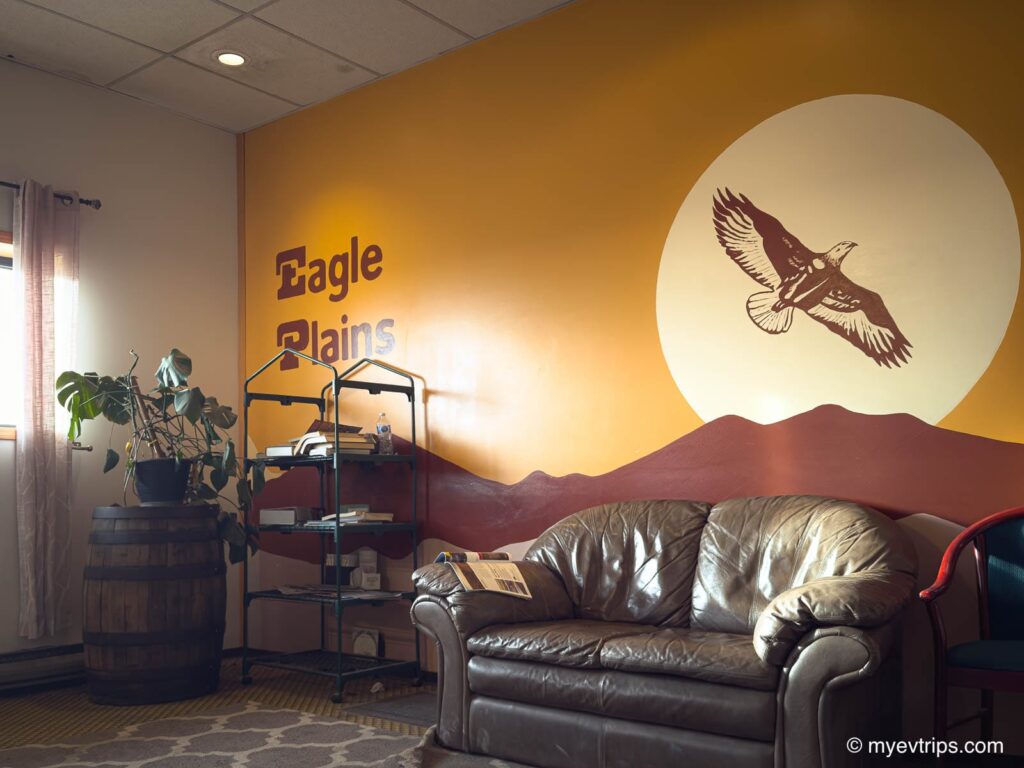
The couple in the Rivian were camping too, but in a rooftop tent. There’s no way they would’ve survived a night inside that shop. Even I started questioning whether I was just exhausted or quietly drifting into carbon monoxide poisoning. I literally fell asleep debating it 😂.
Thankfully, Tesla’s BioDefense Mode did its job—and I lived to tell the tale.
Eagle Plains to Dawson City: Range Redemption and Celebration
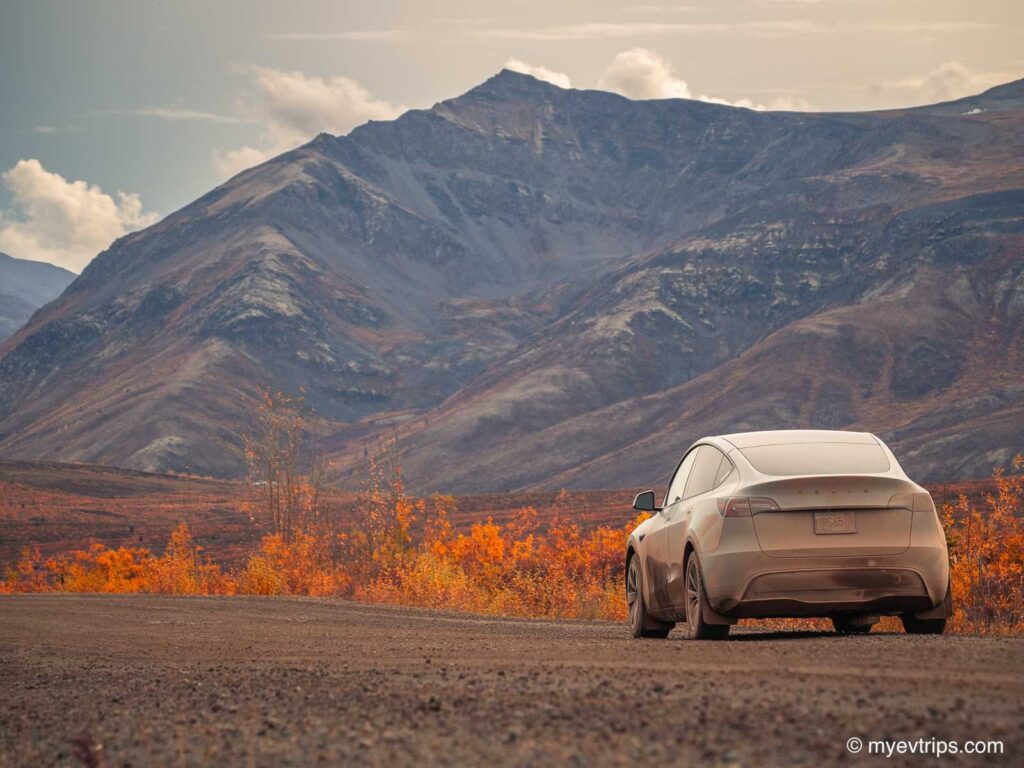
In the morning, I left Eagle Plains at 100%, knocking off pounds of mud to reduce rolling resistance. My range steadily improved—dramatically so. I crept along cautiously between 45–65 km/h, worried about the rim I had swapped in Inuvik after tire trouble.
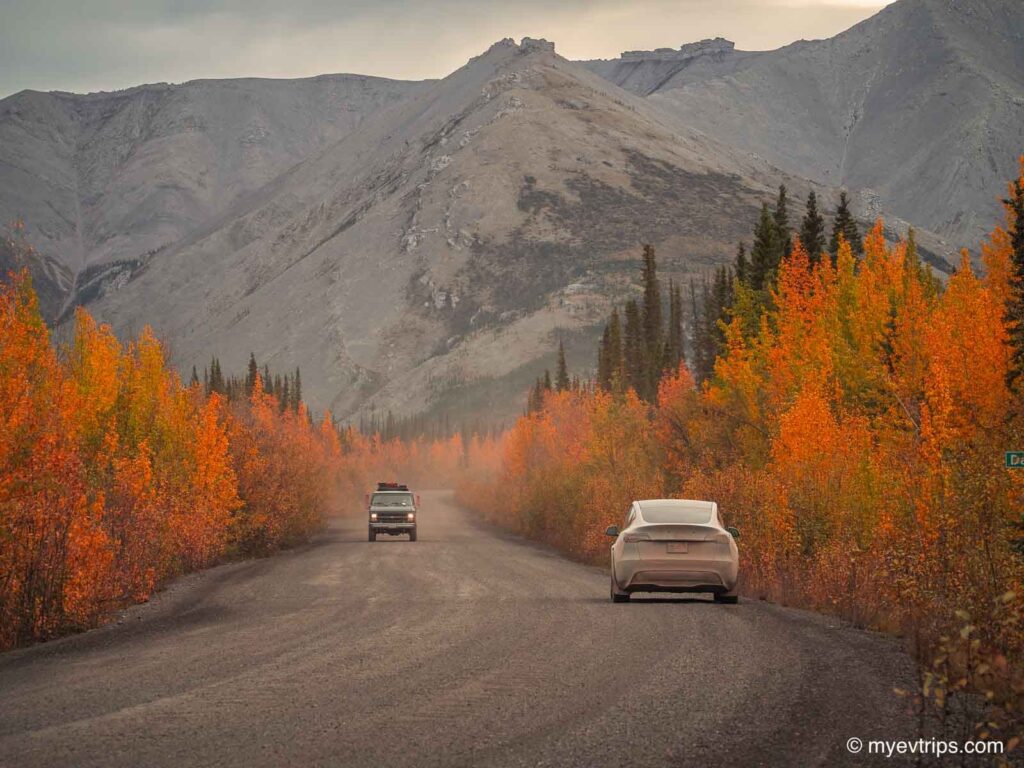
As I neared Tombstone Park Yukon, I was treated to clear skies and breathtaking views. I stopped for photos and drone footage in Tombstone Provincial Park, grateful for ideal Dempster Highway weather after a week of uncertainty.

The fall colours were out in full force, even more vivid than on my drive north just days prior. It was unreal and a highlight of the trip.
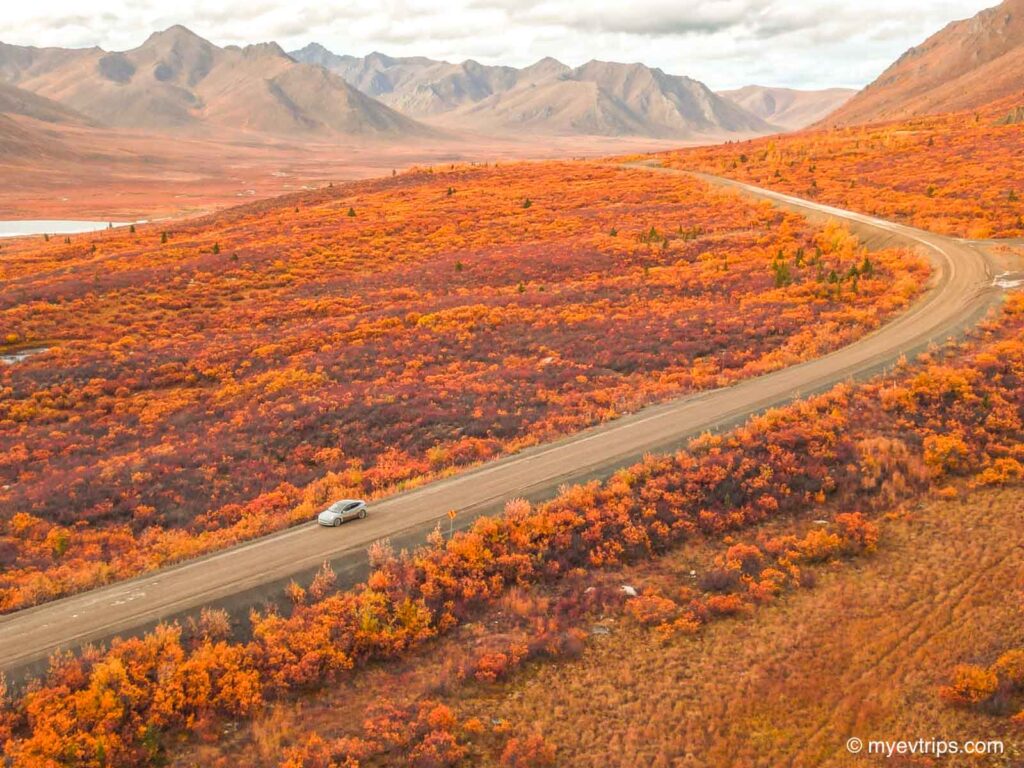
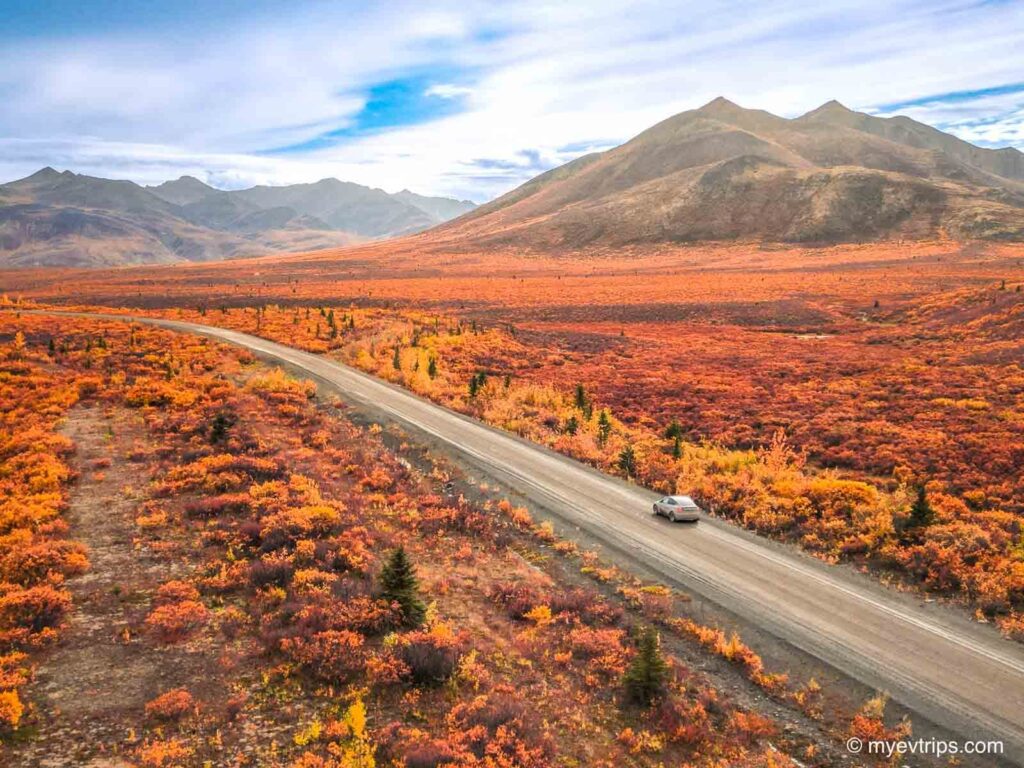
Hitting pavement at the Dempster turnoff felt like winning the lottery. After days of gravel, washboards, and nonstop shaking, smooth asphalt was pure luxury—and with far more range left than I expected.
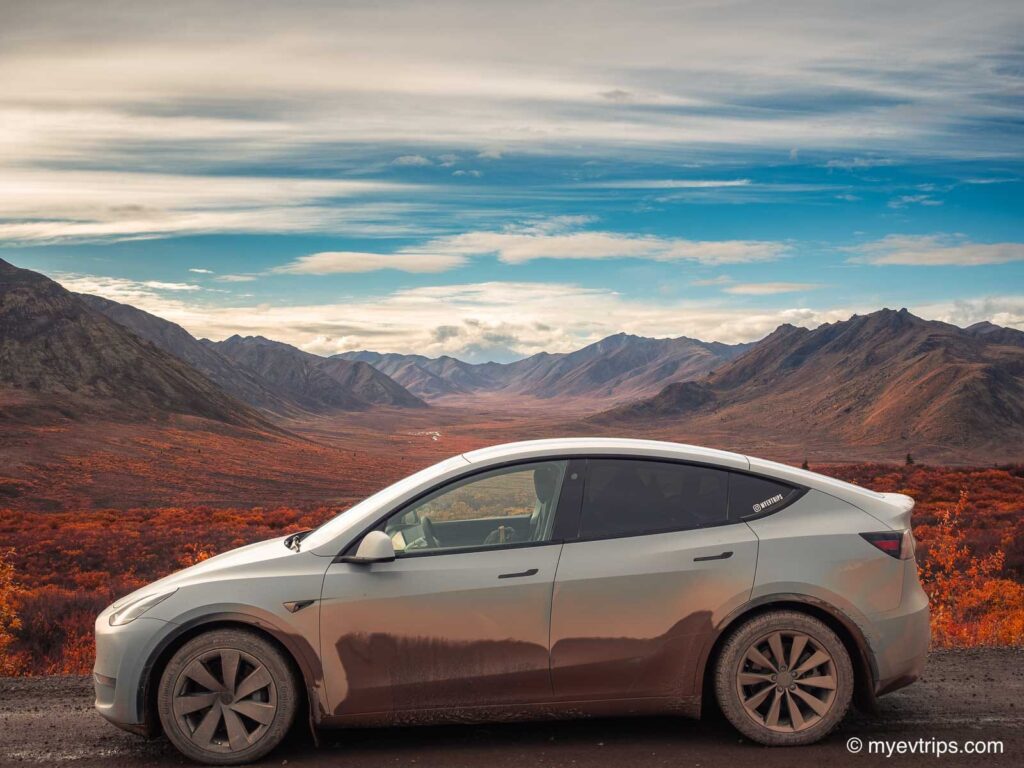


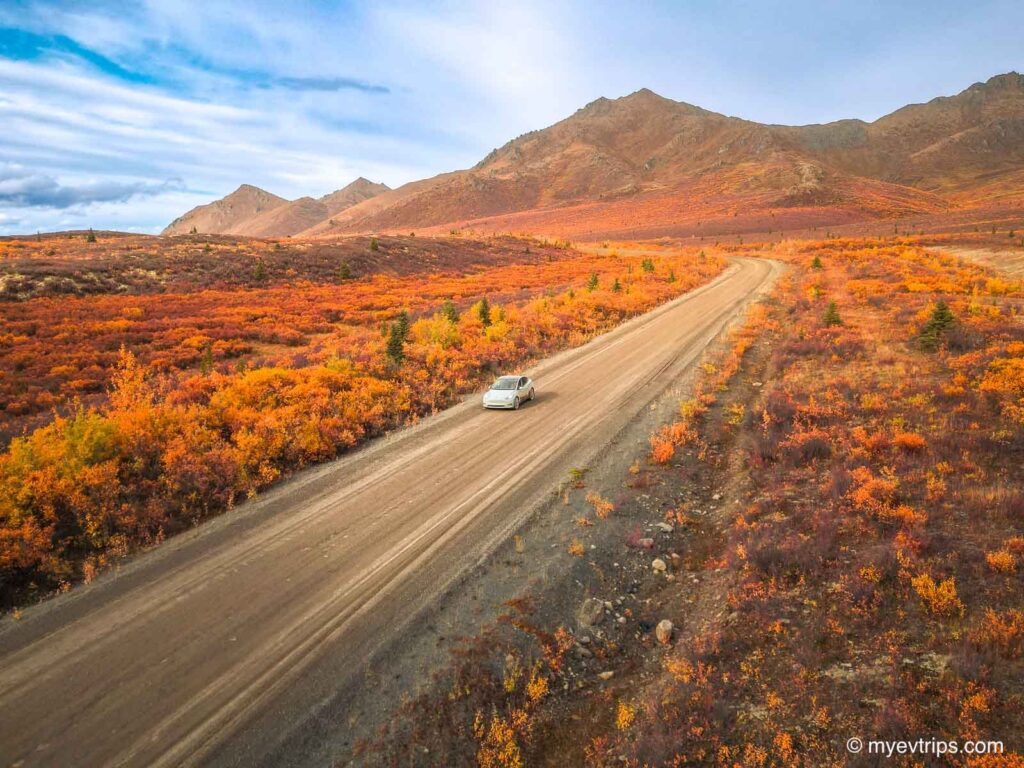
I rolled into Dawson City with 12–17% battery remaining, which honestly felt like a small miracle. That kind of arrival demands a proper celebration: a night at the Downtown Hotel Dawson City complete with cancan dancers at Diamond Tooth Gertie’s, a lucky run at the blackjack table, and—of course—the legendary Sourtoe Cocktail (yes, the one with the real toe).
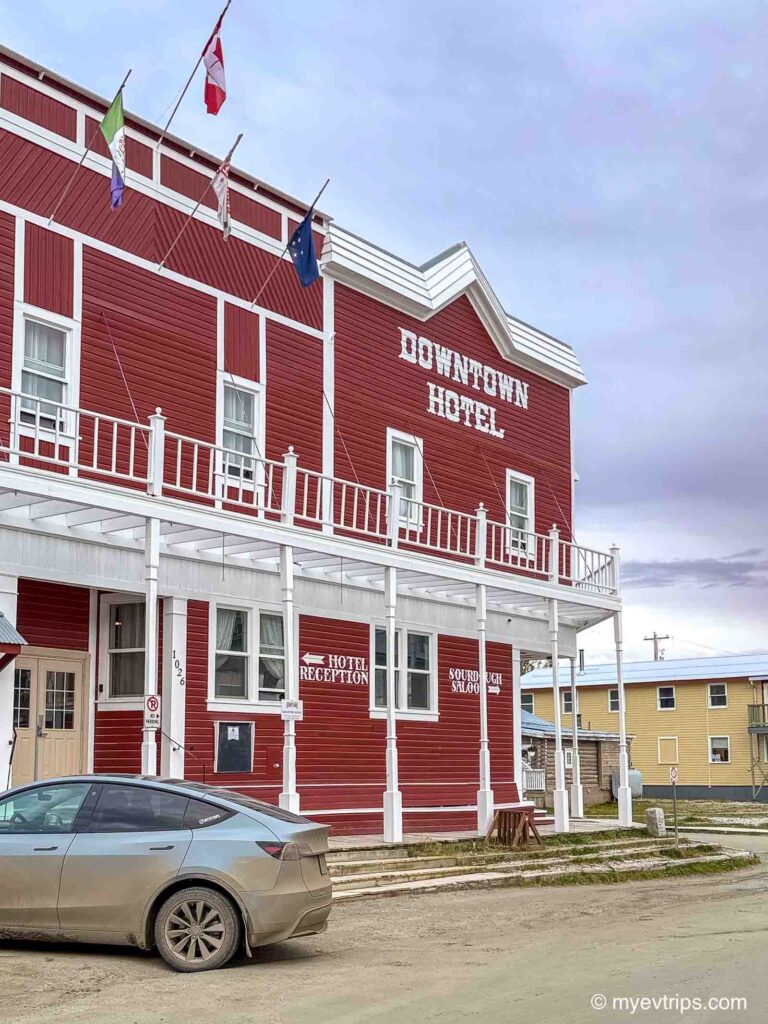
Staying at the Downtown Hotel felt downright luxurious, especially after my carbon-monoxide-flavoured night in Eagle Plains. A long hot shower, a comfortable bed, and an actual quiet room felt like five-star treatment after days on the Dempster.


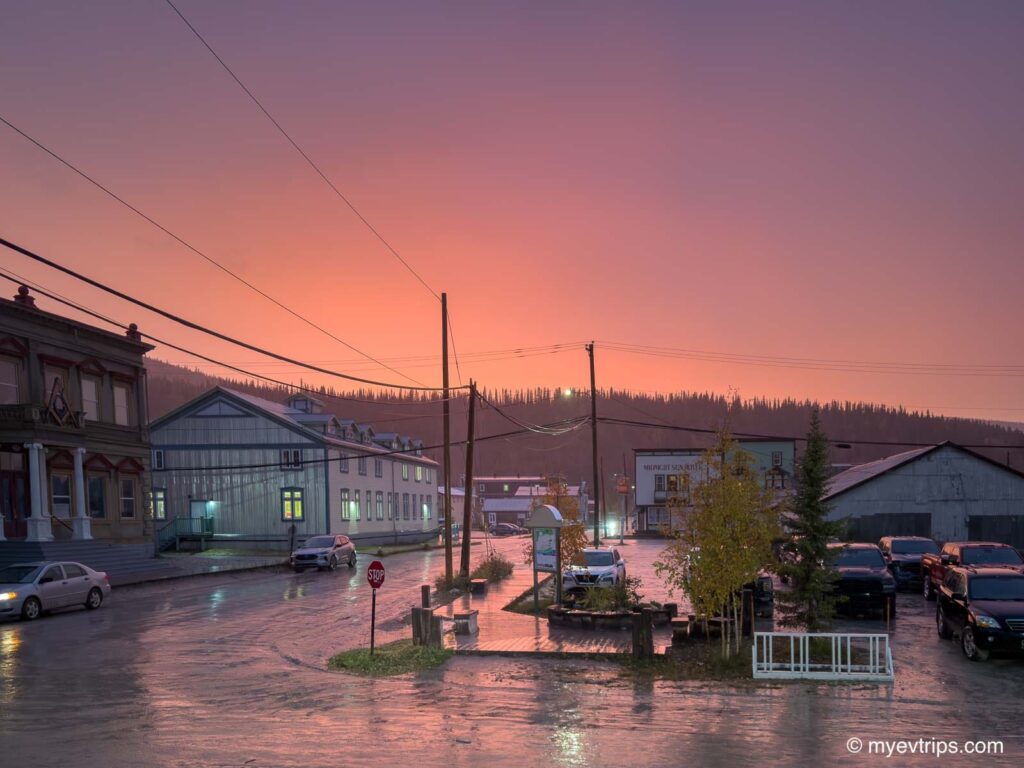

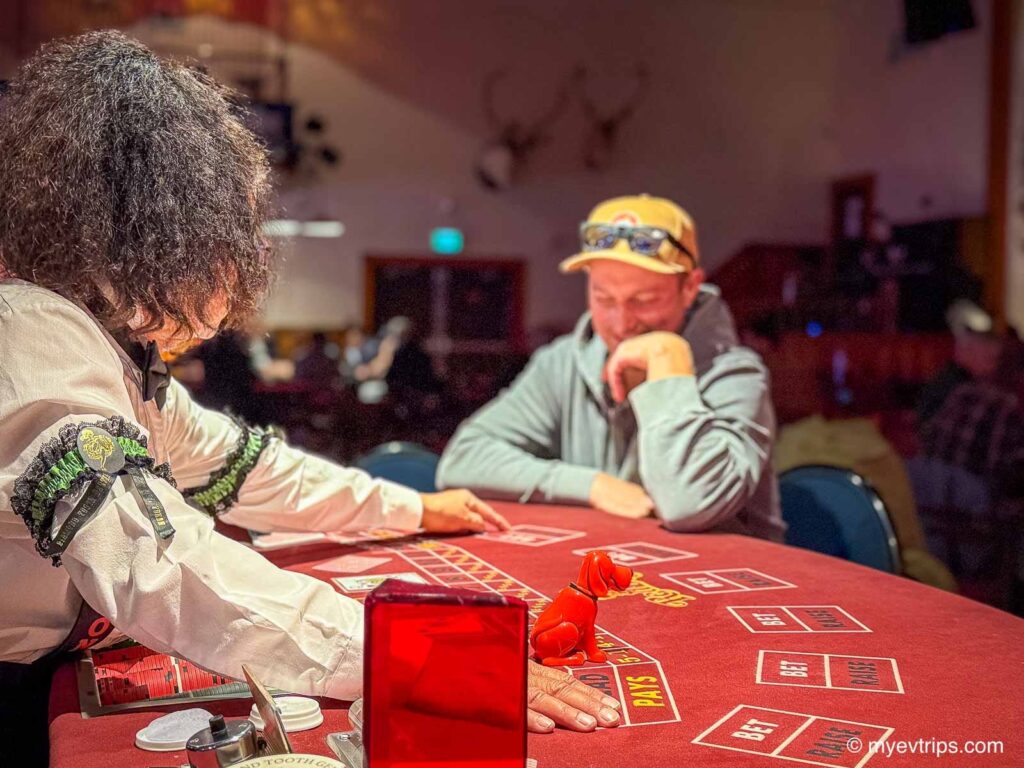
The hotel is centrally located and within easy walking distance of Dawson’s top sights—from the S.S. Keno paddlewheeler and the Klondike history museums to the colourful frontier-style buildings lining the main streets. It’s the perfect home base to unwind, reset, and enjoy Dawson before the next stretch of adventure.
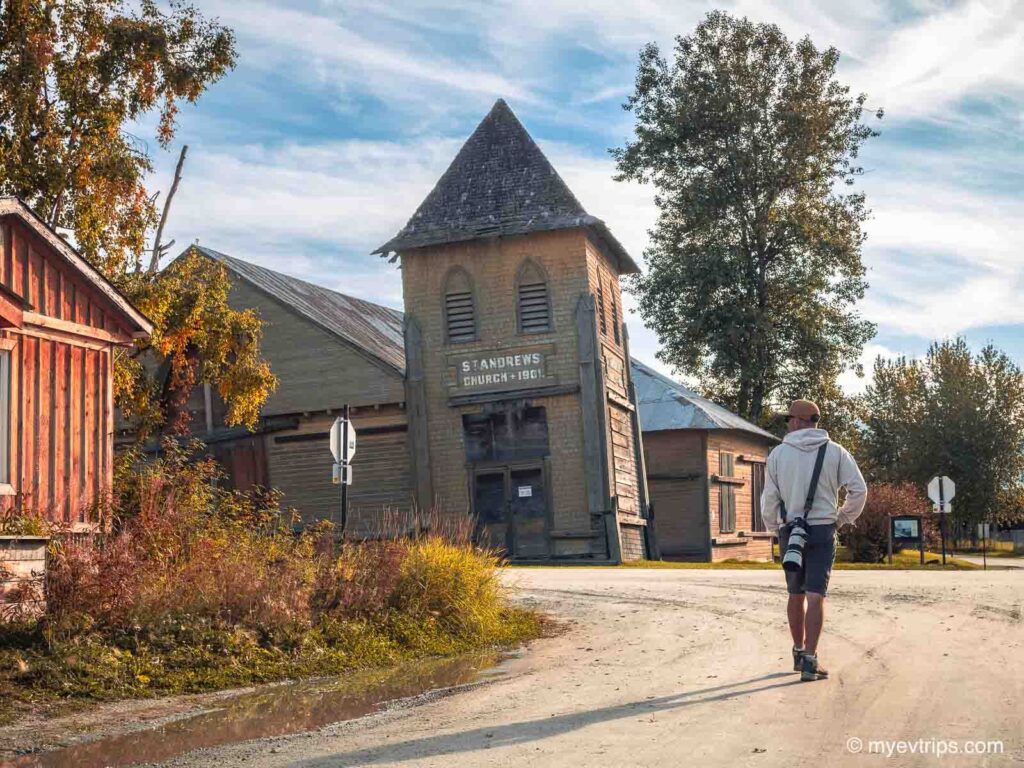
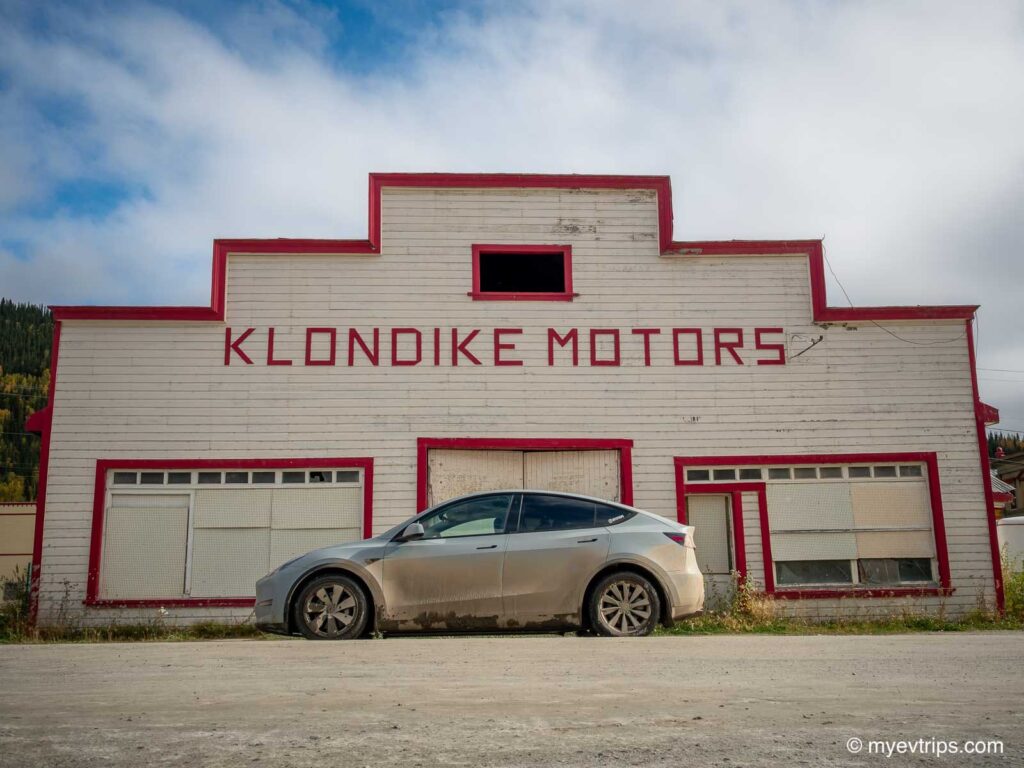
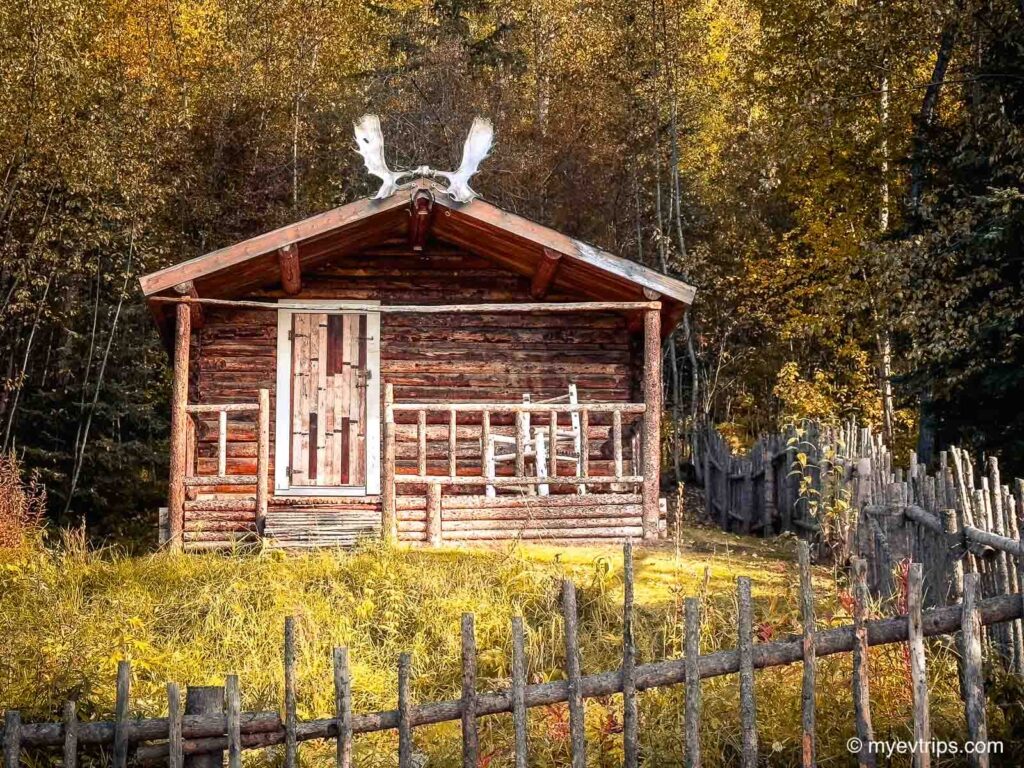
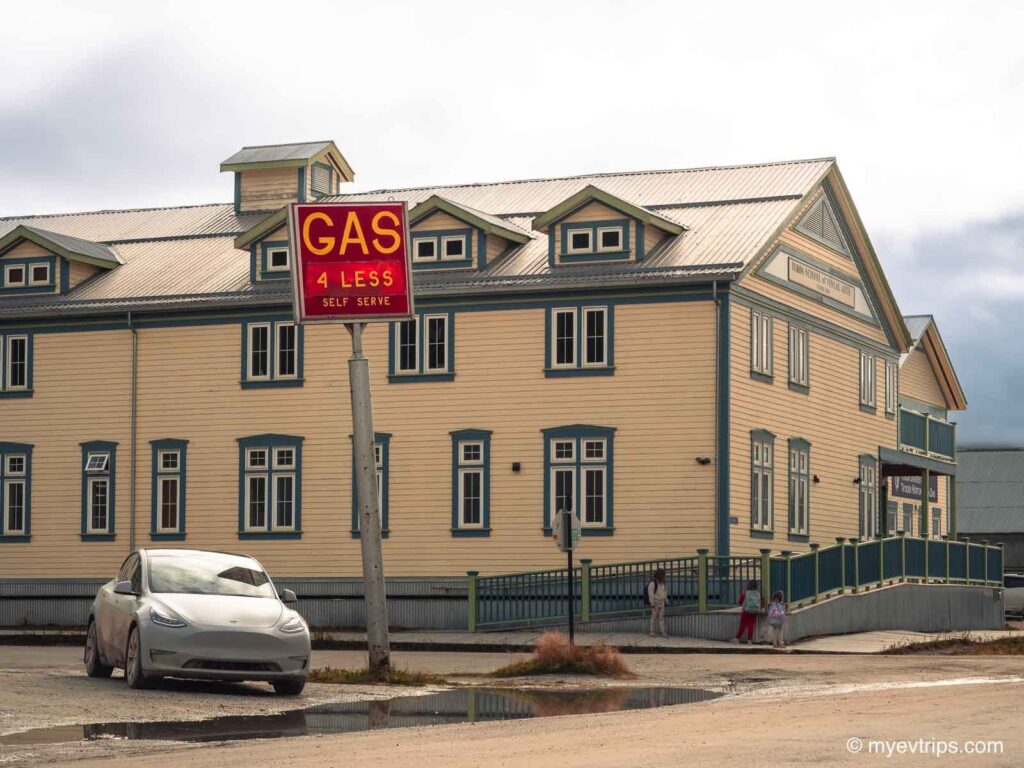
I topped up again at the free charger by the city gazebo and gave myself an extra day to soak in all of quirky Dawson’s charm.
You can read more about this fun town in my Dawson City travel guide.
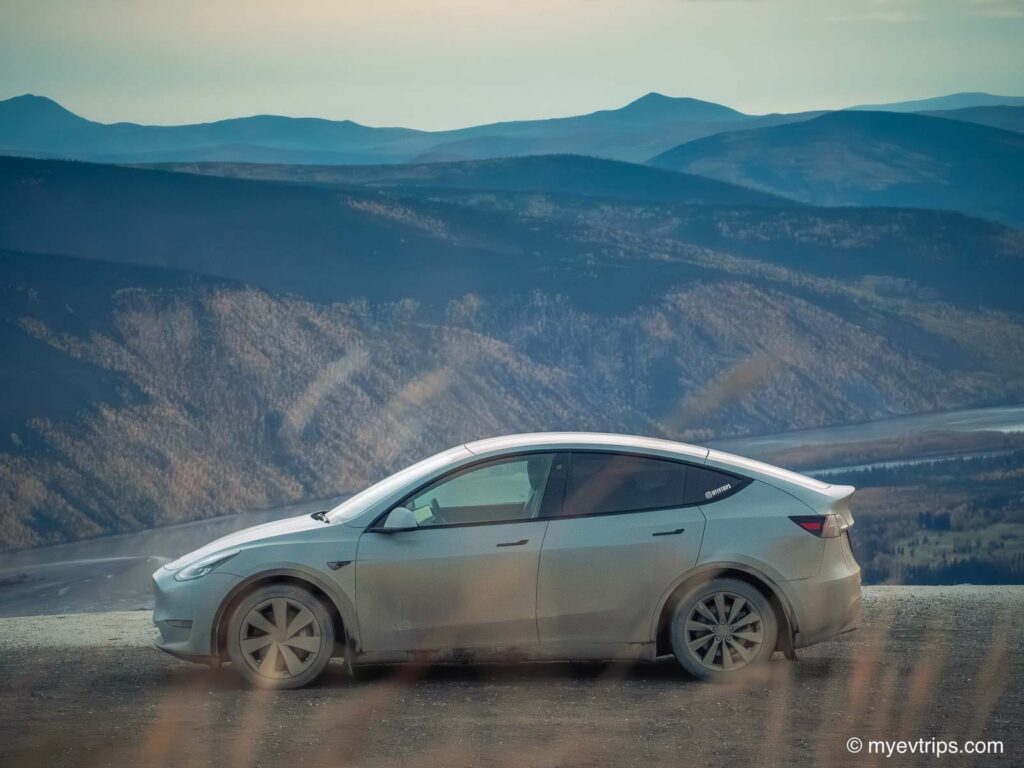

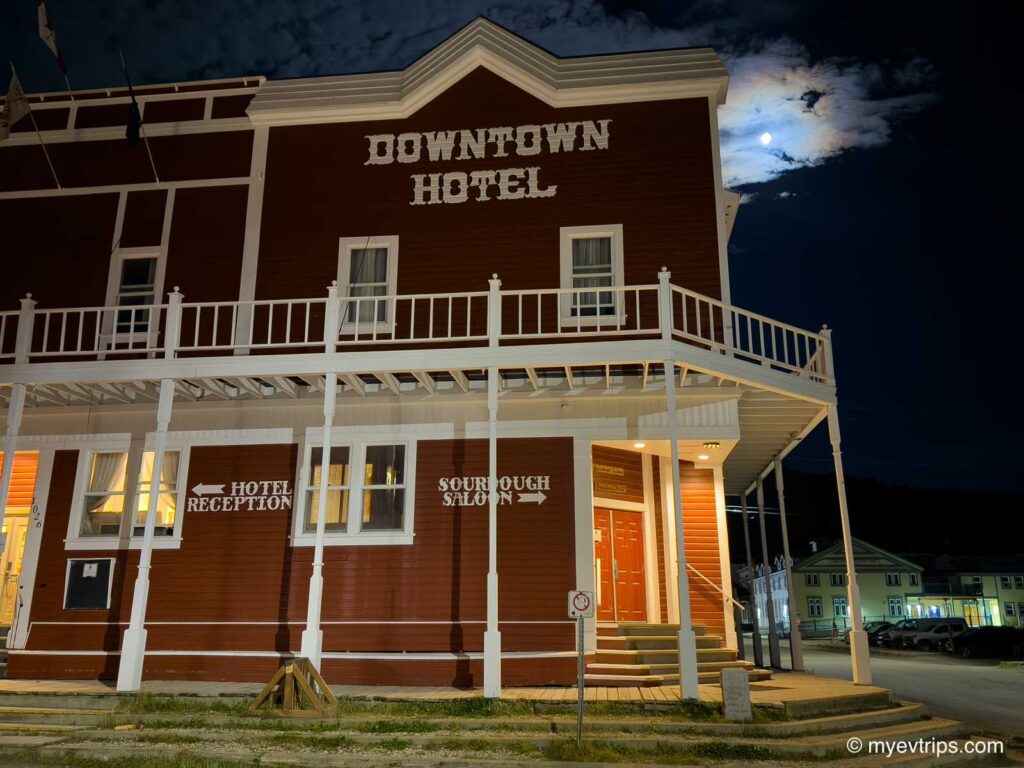

We capped off the visit with a sunset drive up the Midnight Dome before parting ways with my ICE-traveling friend Aaron.
Dawson City to Whitehorse: A Smooth Run South
The drive from Dawson City to Whitehorse was far more straightforward—no drama, no surprises, just classic Yukon scenery rolling by.
I had planned to stop at Takhini Hot Springs for a long soak, but after settling into Whitehorse’s rhythm and still feeling surprisingly refreshed from my stay at the Downtown Dawson City Hotel, I decided to skip the soak and head straight into the city instead.

Once I got to Whitehorse, I hit another car wash—this time far more aggressively than the one in Inuvik. I was getting a noticeable wobble at higher speeds and suspected the culprit was a thick layer of caked-on mud hiding in the wheels and undercarriage.
There are plenty of free L2 chargers throughout the city, but not wanting to break EV etiquette by leaving the car connected without charging, I decided not to plug in overnight and planned to return in the morning instead.
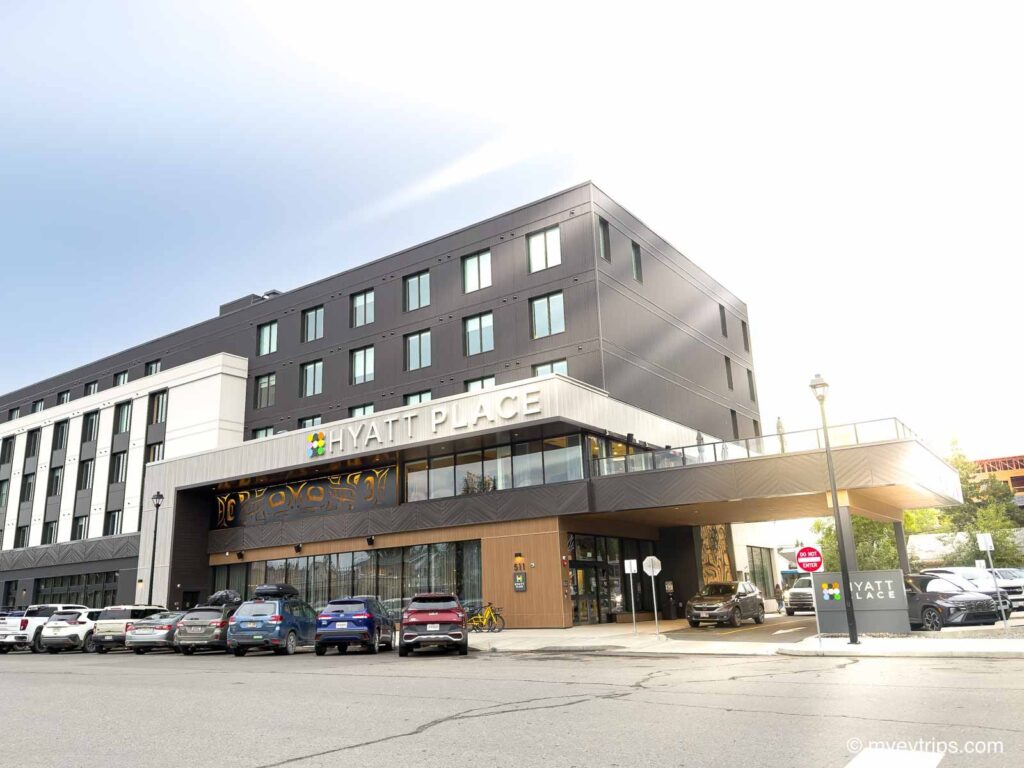
For the night, I checked into the Hyatt Place Whitehorse, which might quietly be the nicest hotel in the city—if not the entire territory. After the rough-and-tumble conditions of the Dempster, the clean rooms, plush beds, and modern touches felt downright luxurious.
You can read my full Hyatt Place Whitehorse hotel review over at thislifeintrips.com.
After checking in, I went for a walk and was treated to one heck of a sunset—because sunsets just hit a little differently in the North.
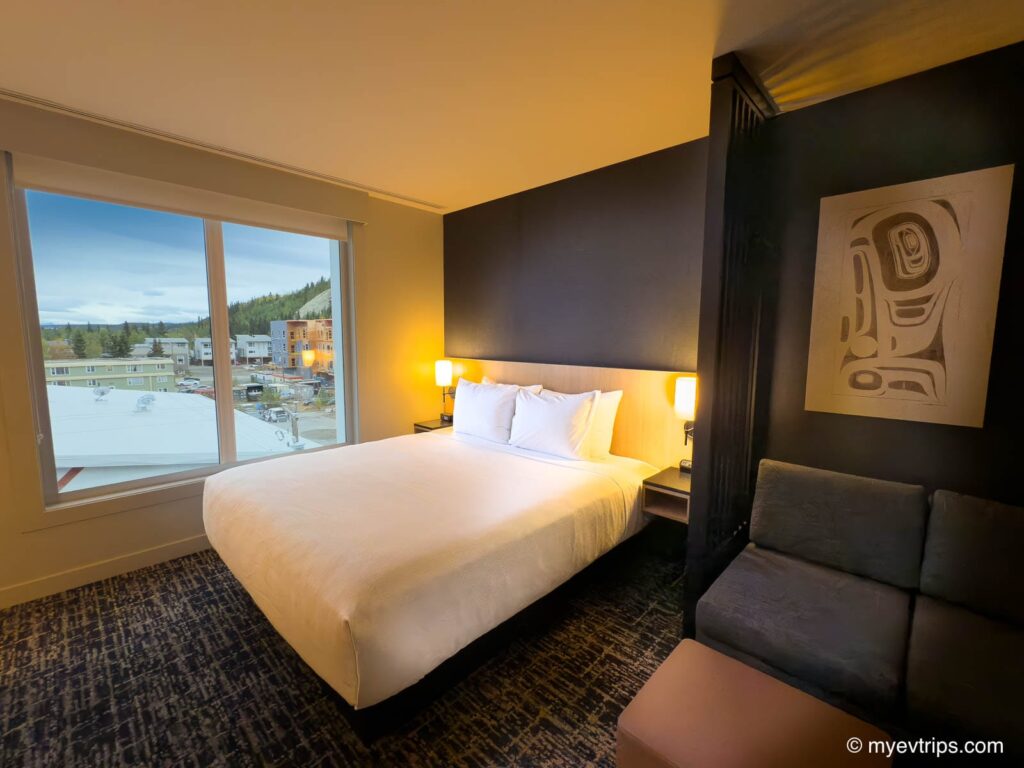
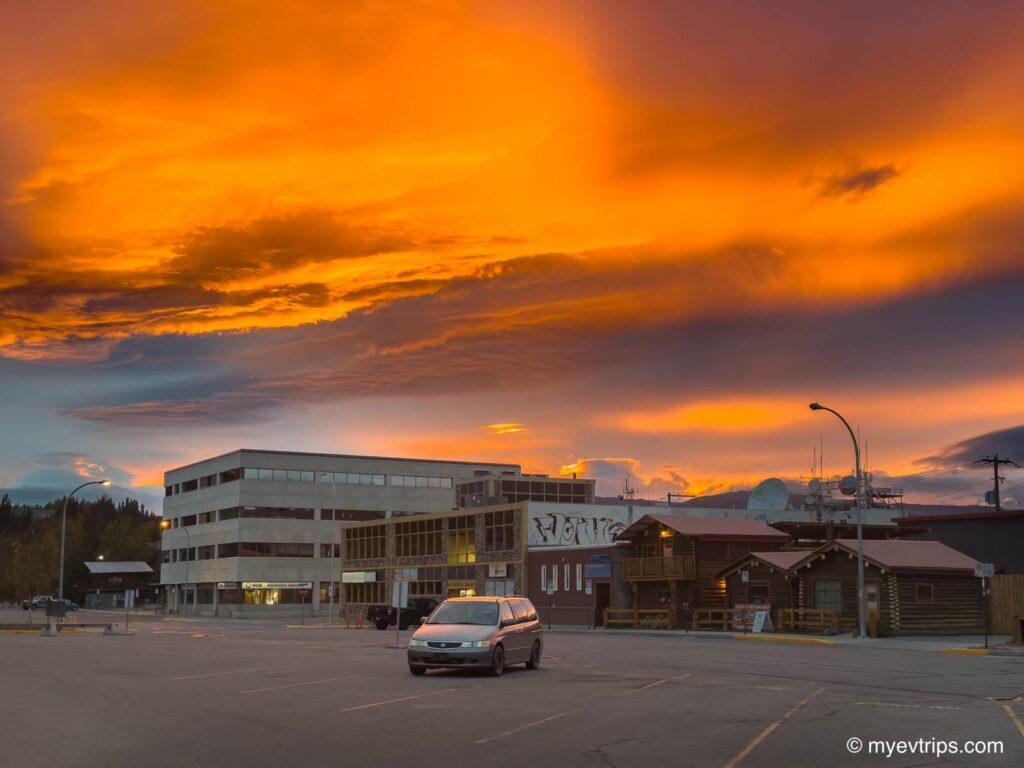
Whitehorse to Liard River Hot Springs
Turns out, charging in Whitehorse proved tricky. The next morning I found that the downtown L2 chargers were full, and both fast chargers in the same lot were down.
It’s ironic—electric vehicles in Canada are well adopted in the Yukon, but this also means more competition for chargers.
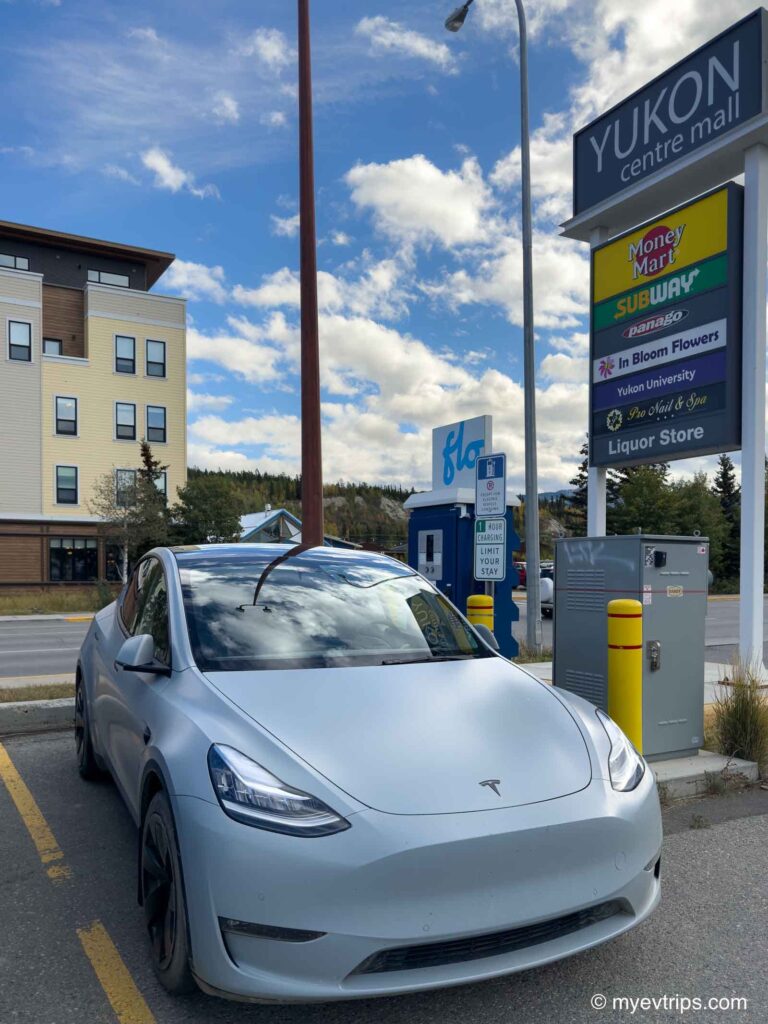
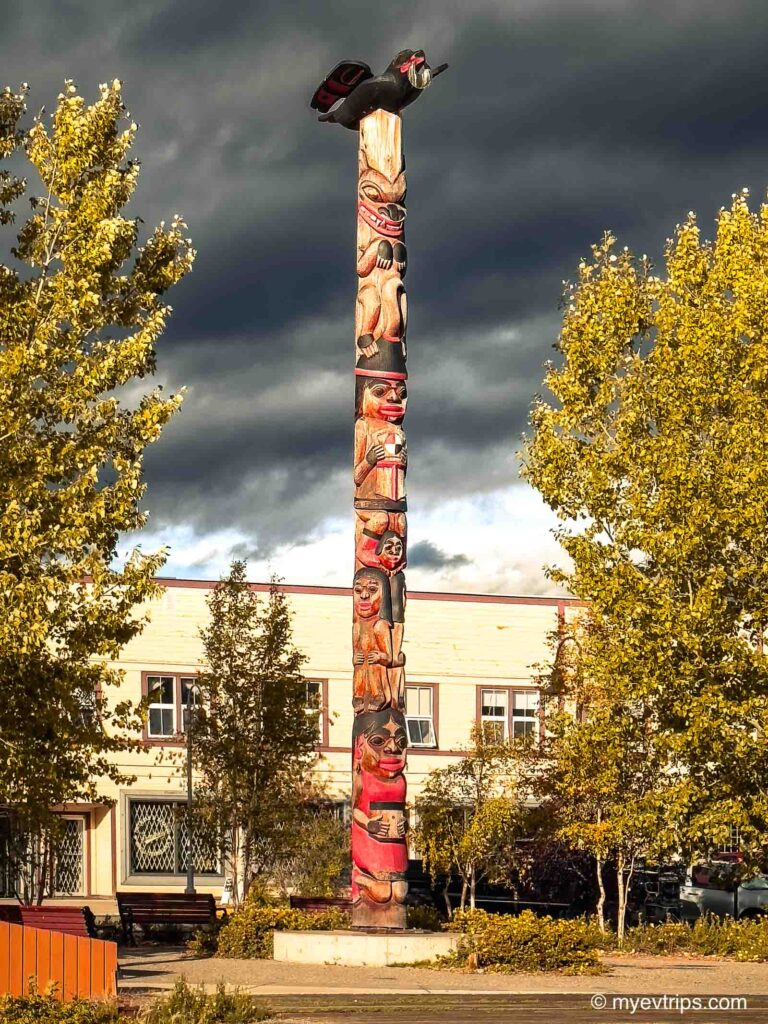
Eventually, I found a nearby L2, charged, and enjoyed a riverside bike ride. Later, I moved to a working fast charger before continuing south.

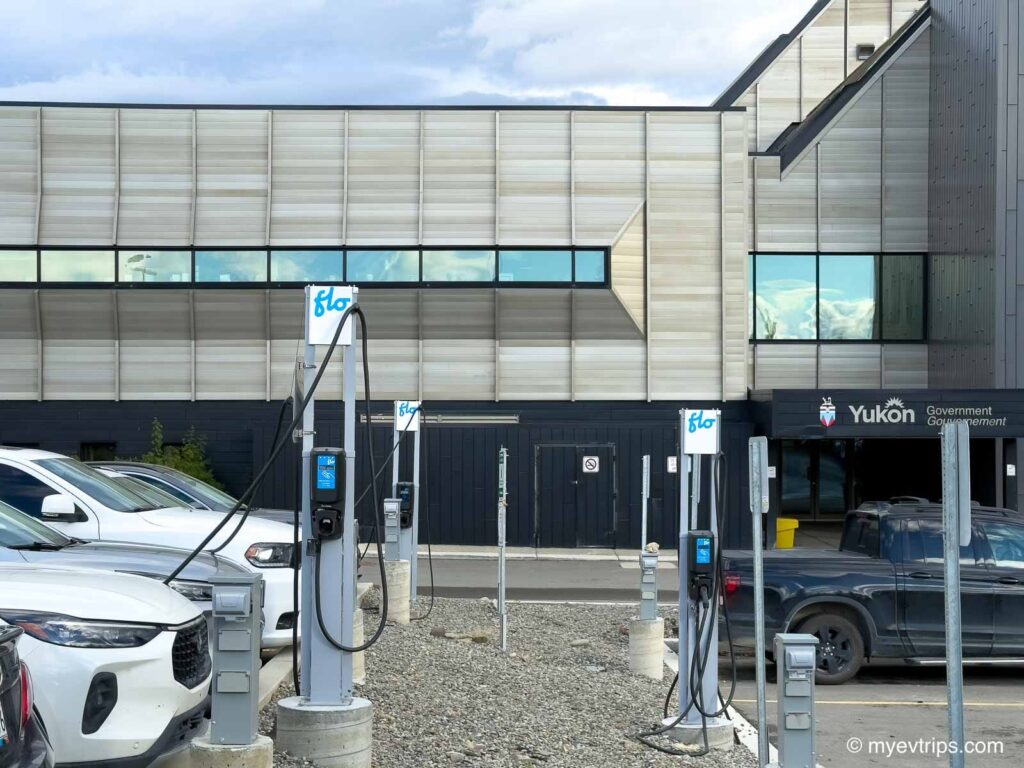

In Teslin, the charging bottleneck became obvious. A Cybertruck from Alaska had to wait for me to finish because, even though each L3 station has two connectors (one CCS and one CHAdeMO), only one vehicle can actually charge at a time.
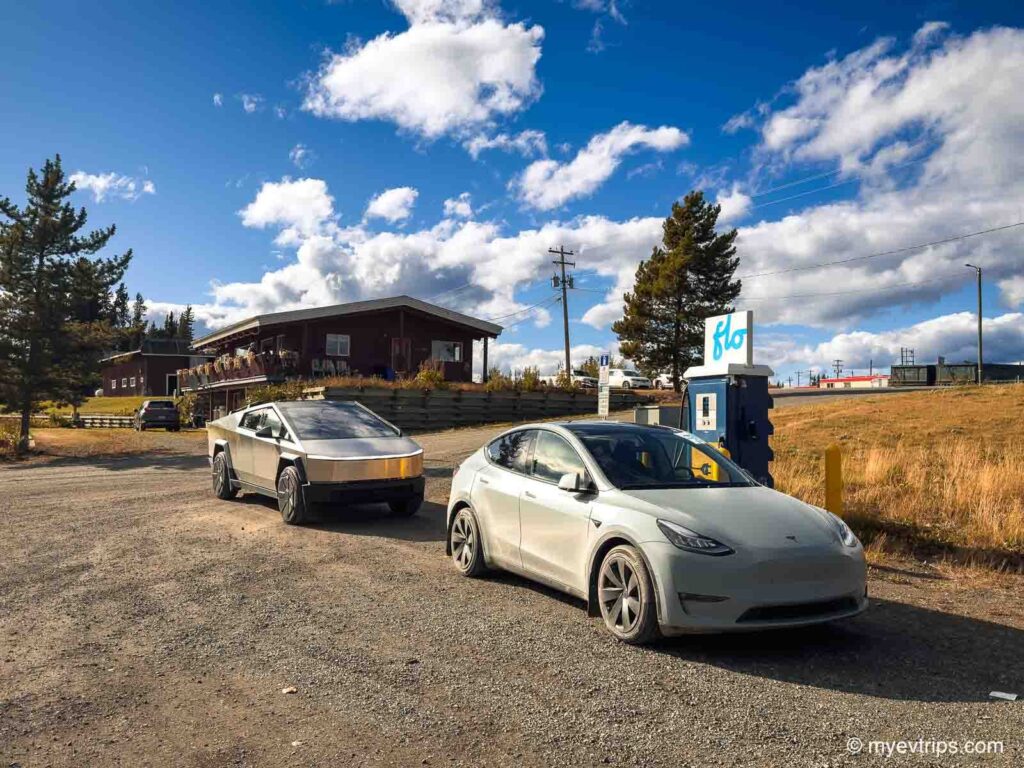
It was a pattern that continued for the next day and a half—including a later stop in Watson Lake, where I met a senior road-tripper from Chicago in a standard-range Model Y facing the same issue.
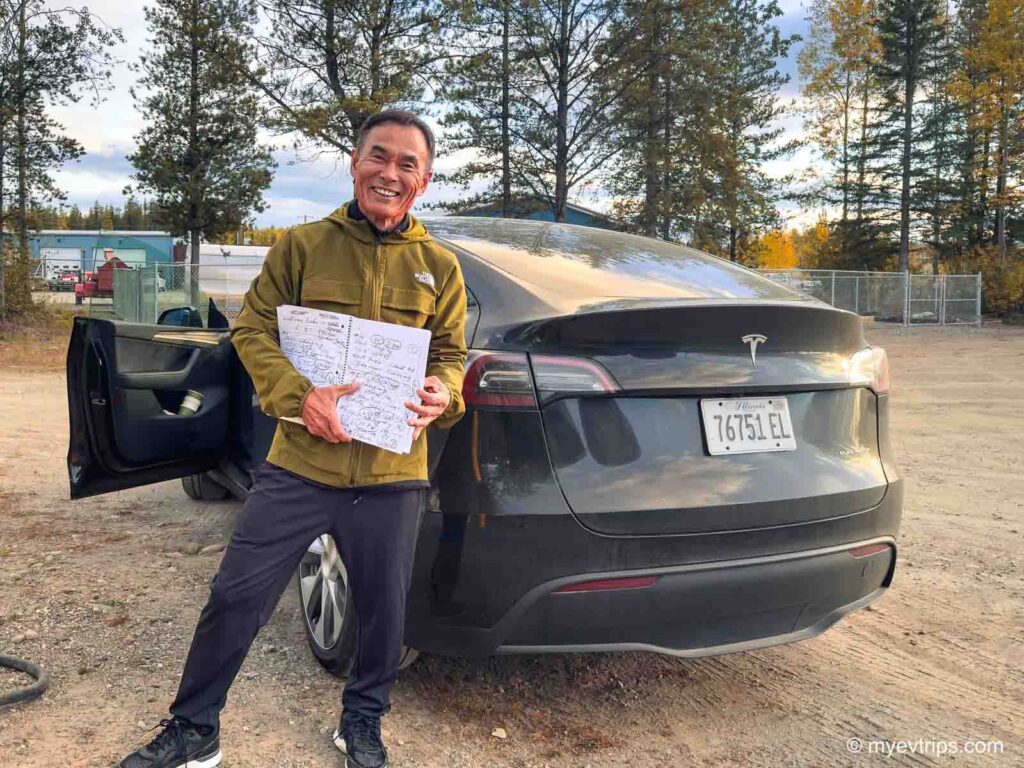
He had handwritten notes of all his charging stops—no apps, no PlugShare, nothing digital. Truly old-school.
At one point, he even called his daughter in Chicago and then handed me the phone so I could explain a few things to her, which was honestly adorable. Before he could get going, I helped him troubleshoot his CCS adapter, and once he was charged and on his way, it was my turn to plug in.
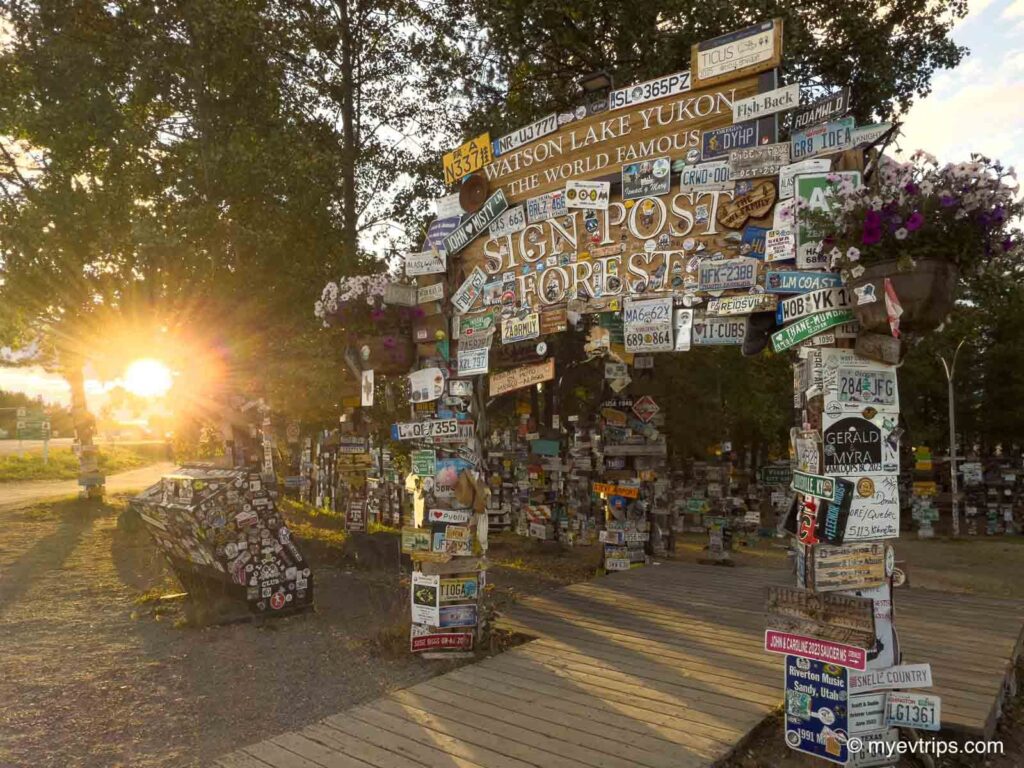
With the car topping up, I wandered over to the iconic Sign Post Forest, one of the Yukon’s quirkiest and most beloved attractions.
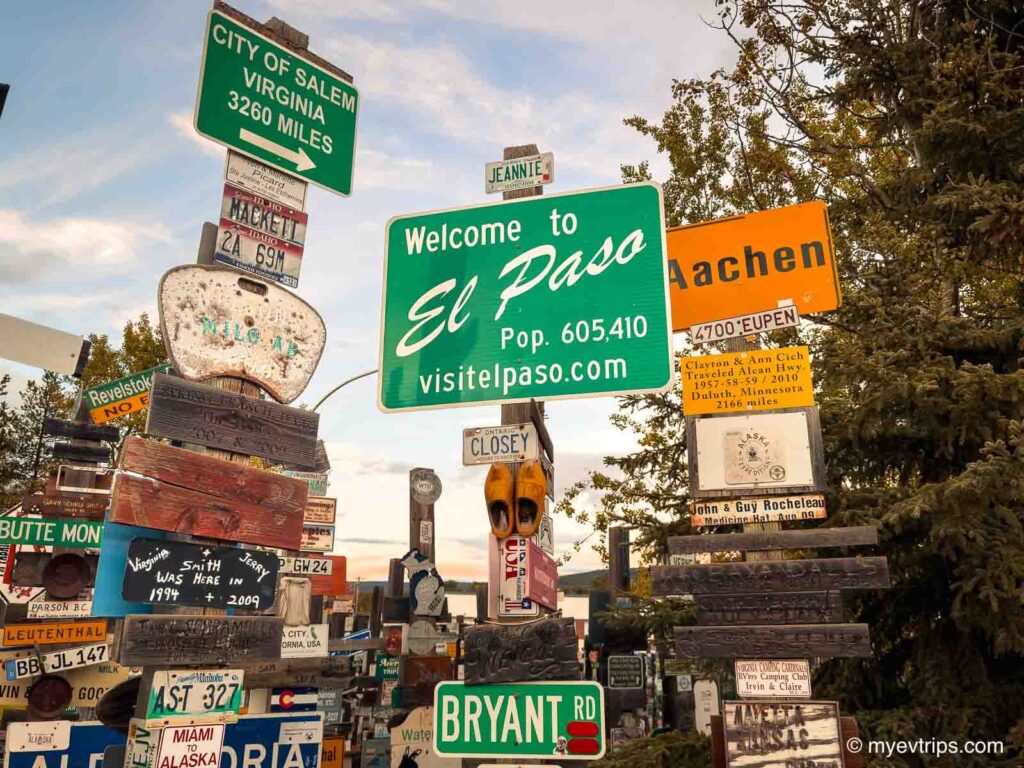
What started during WWII with a single homesick U.S. Army soldier posting a sign to his hometown has grown into a sprawling collection of more than 100,000 signs from travellers around the world. You could spend ages wandering the rows—license plates, street signs, handmade boards, and everything in between.
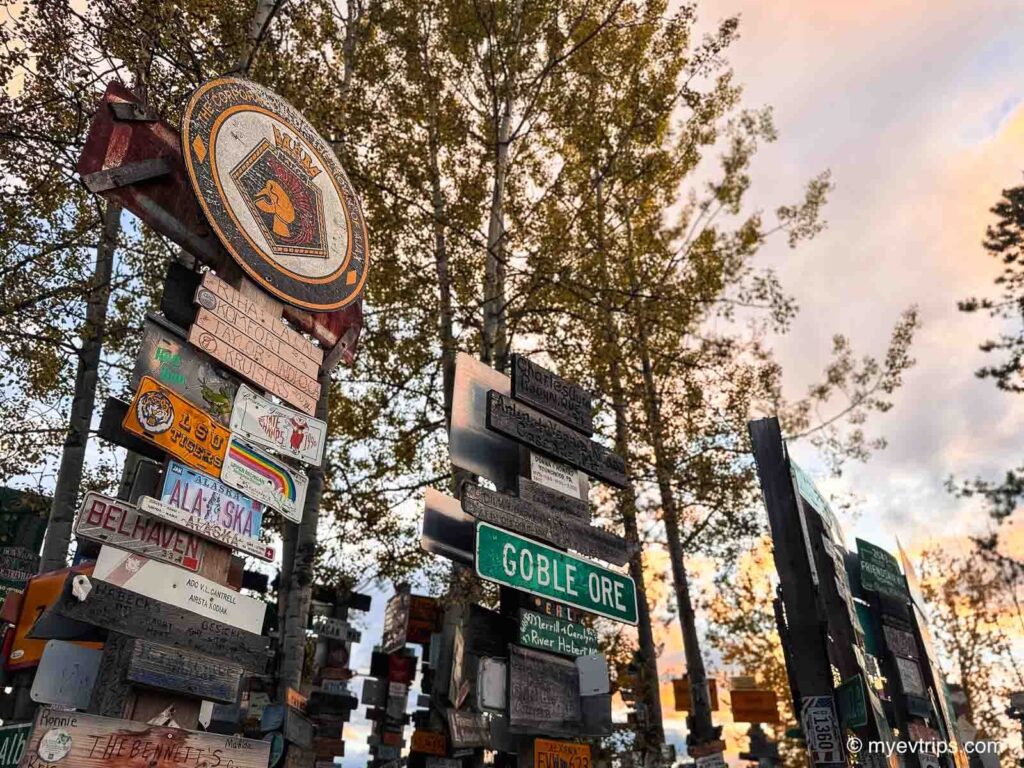
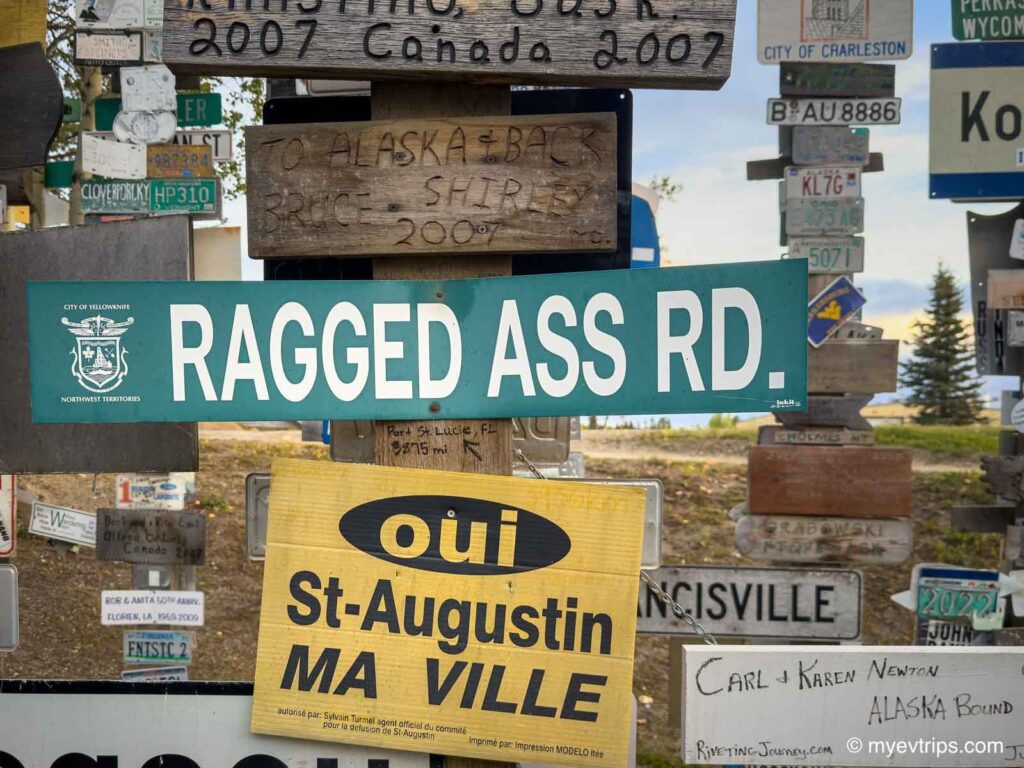
I’ve written a full review of the Sign Post Forest over on ThisLifeInTrips.com, if you want to dive deeper into its history and charm.
That night, I reached Liard Hot Springs much later than I would’ve liked—and the drive in was tense. The sheer number of bison lining the highway was alarming. In the dark, they looked like large, black speed bumps waiting to end your trip with one wrong move. I crawled along, dodging shadows and massive silhouettes until I finally rolled into the park.

The DC fast charger was down, but thankfully the RV park had 30-amp outlets available. I plugged in, set up camp, and called it a night.
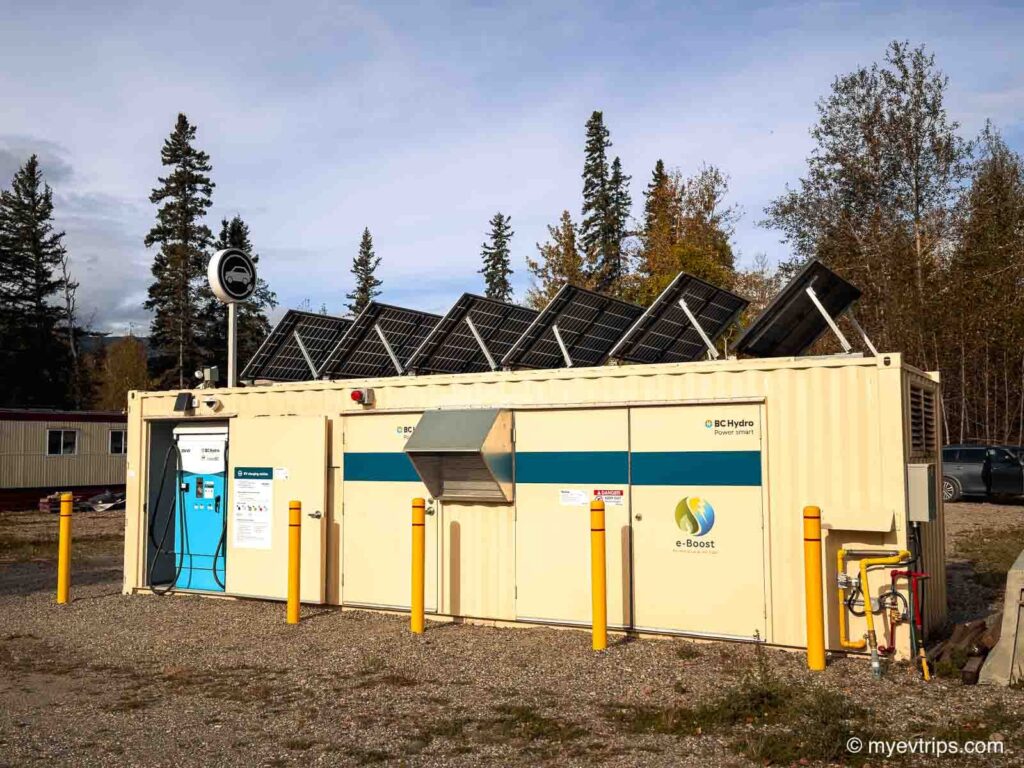

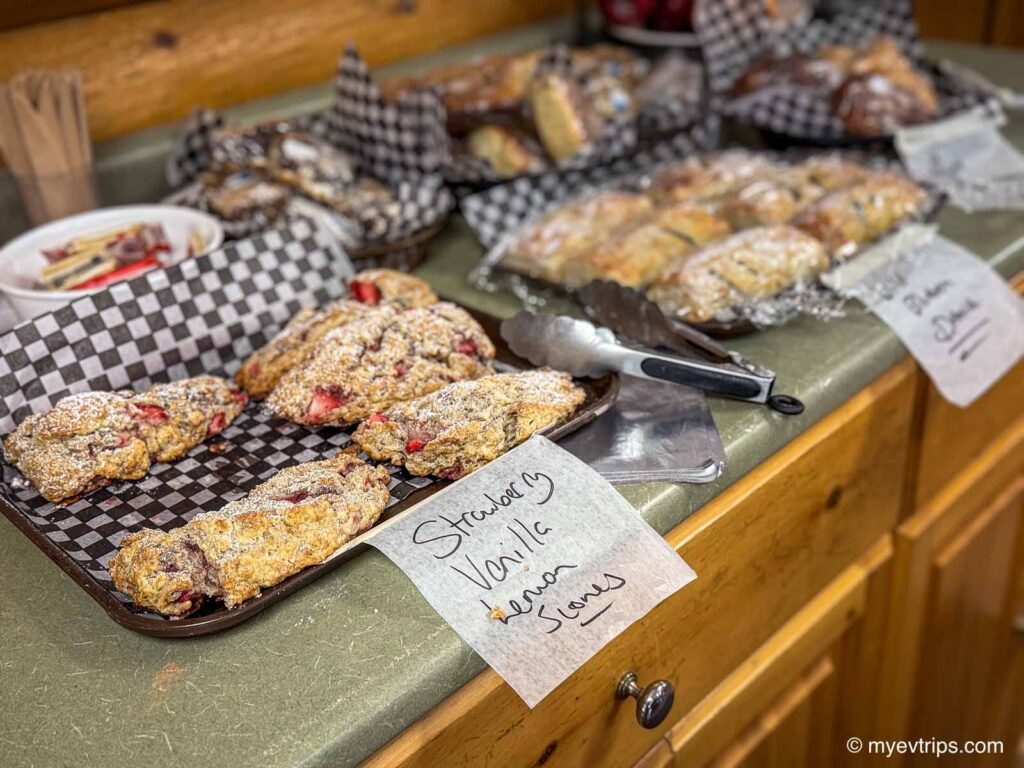
The next morning, I rewarded myself with a long soak in the magical natural hot springs—an experience not to be missed on any drive north or south.
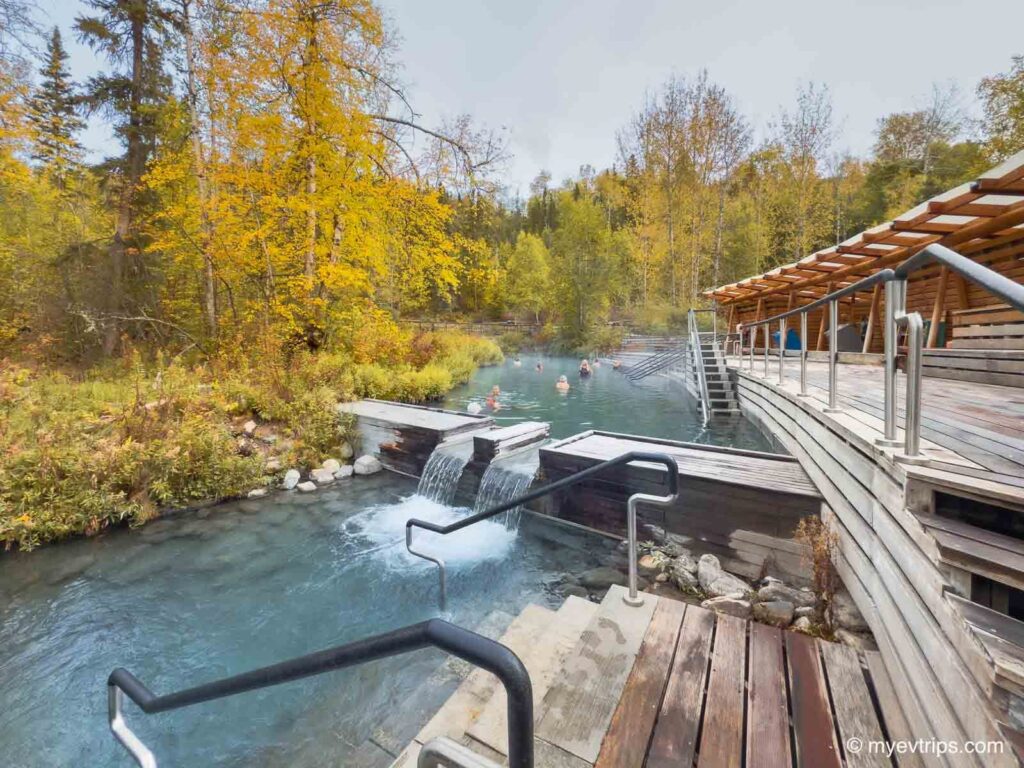
Whether you’re tackling the Dempster or heading into Alaska, Liard Hot Springs is an essential stop. I have a full review of the experience over on ThisLifeInTrips.com if you want the deep dive.
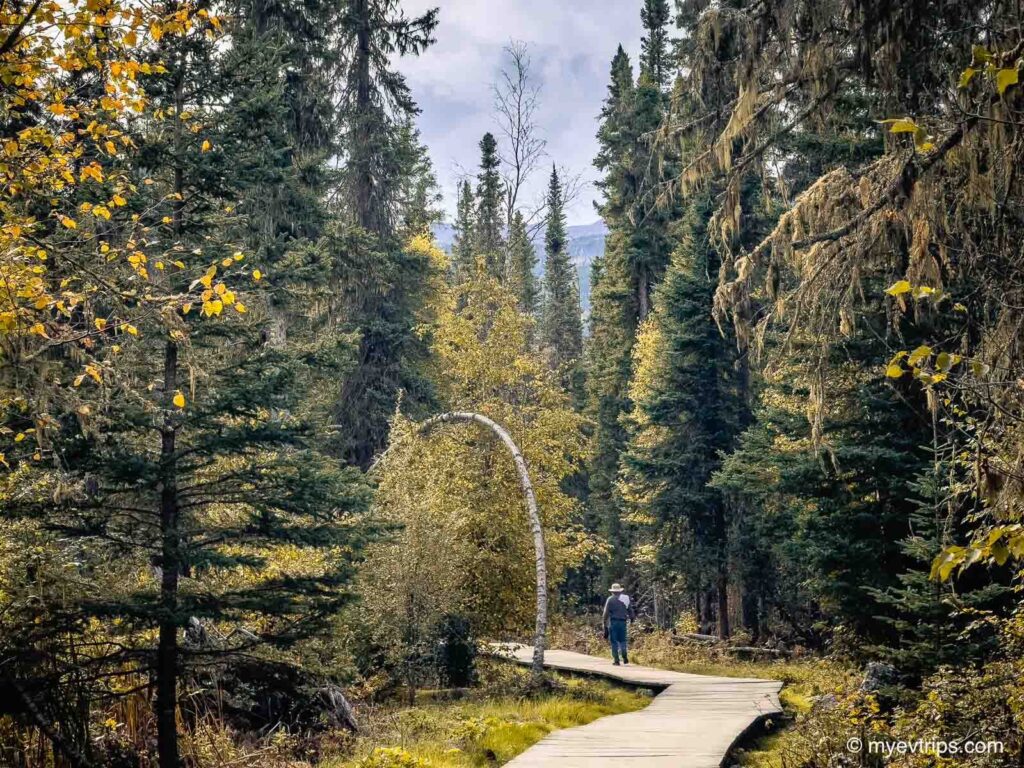
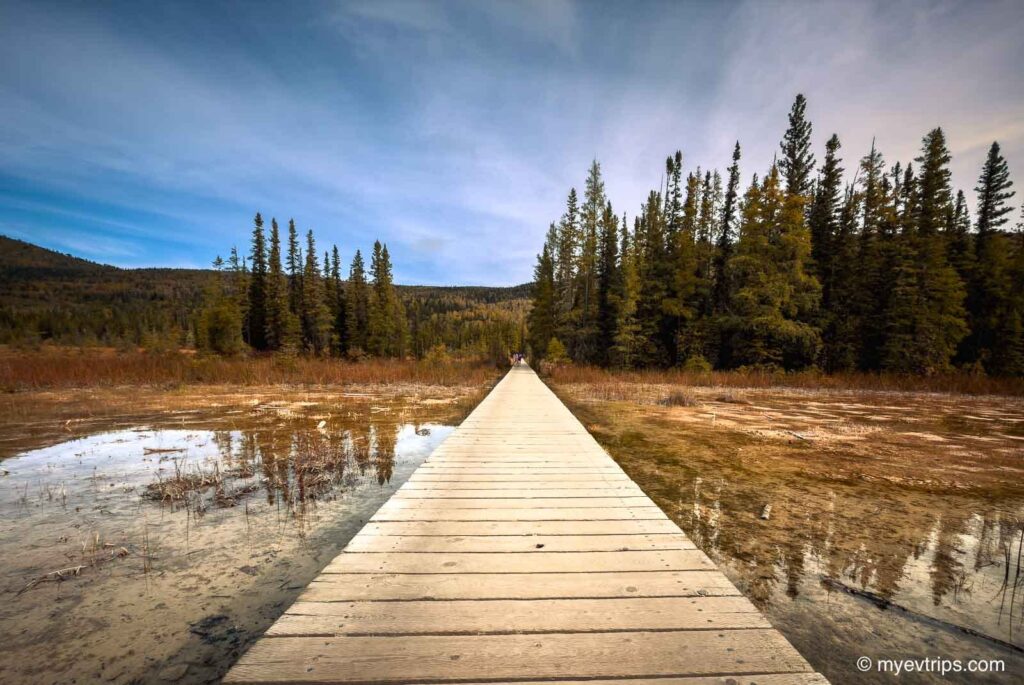
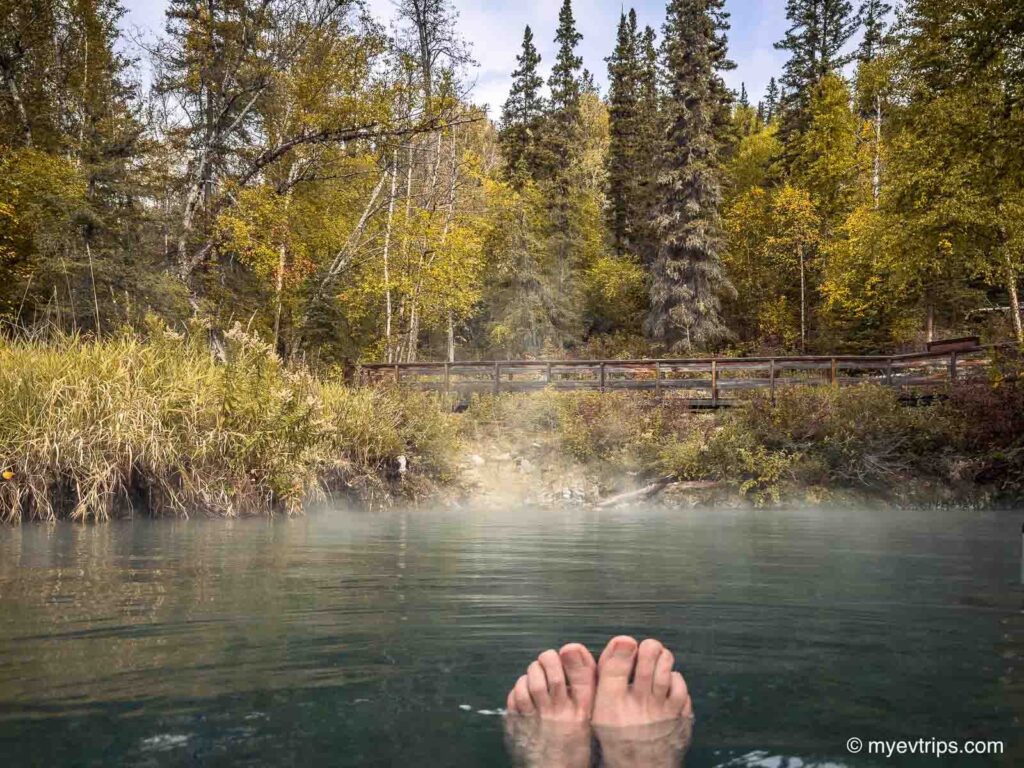

Liard Hot Springs to Grand Prairie: Late Night Drive
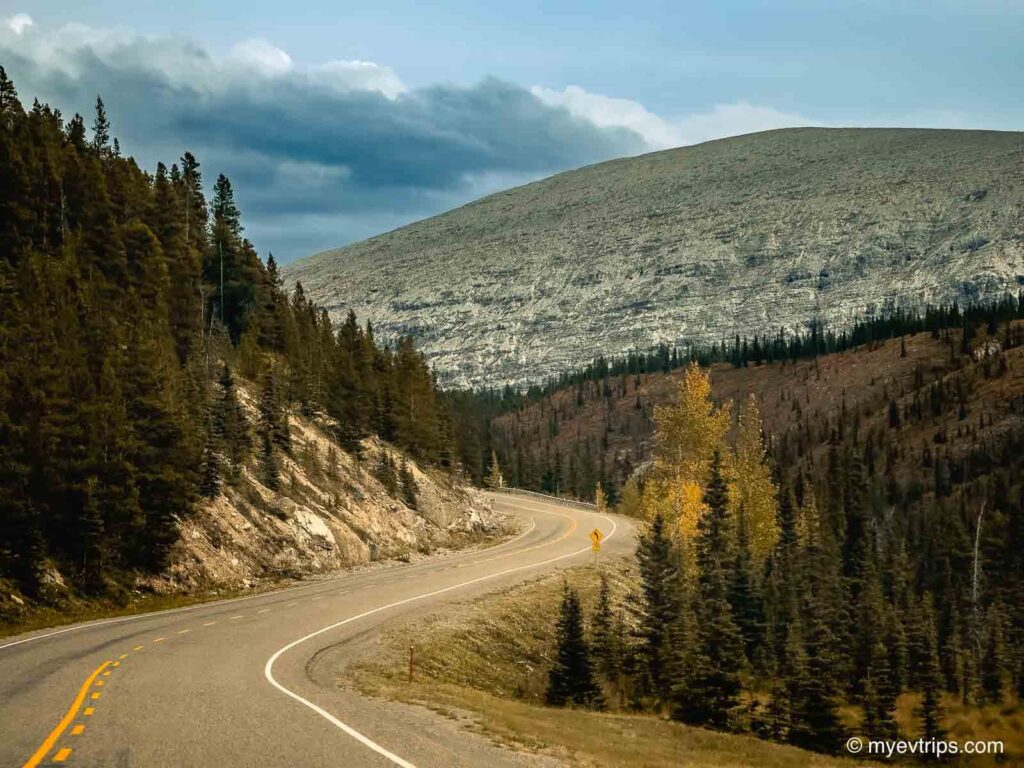
After Liard Hot Springs, I hit several BC Hydro chargers. Some worked, some didn’t. Thankfully, I had Starlink installed in my Tesla so I could check ahead and plan accordingly as I went.

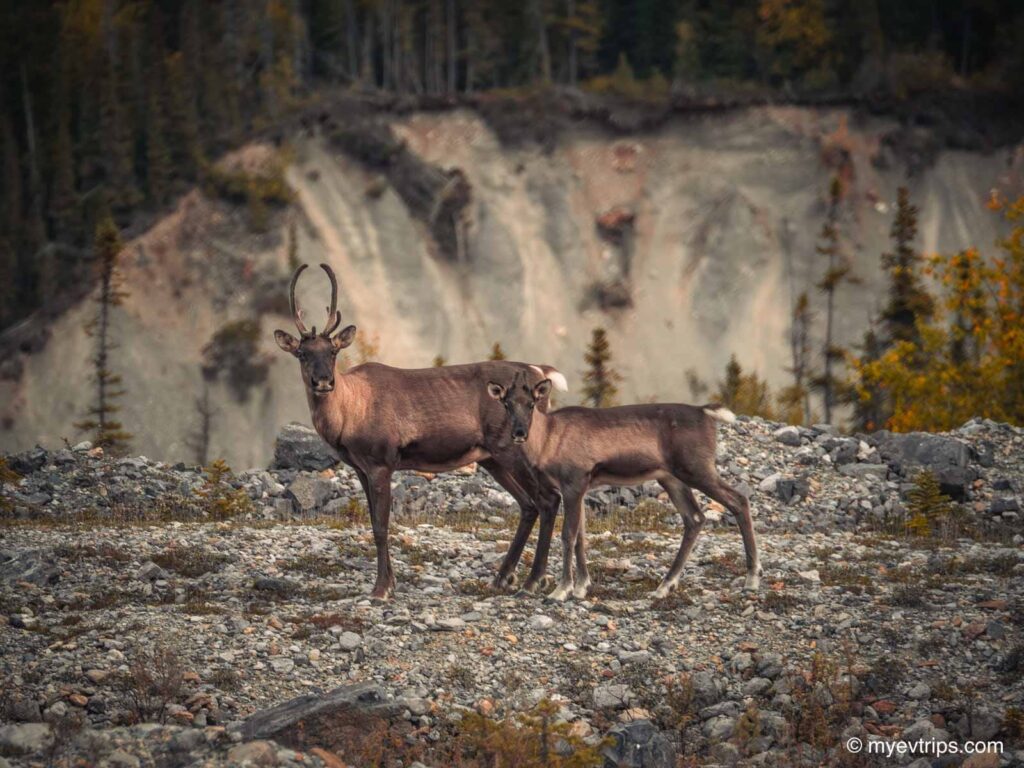
I also optimized my charging plan using the BC Hydro app to target free stations. One such stop was in Fort Nelson and another north of Fort St. John. I could’ve overnighted at Mile 80 like other ICE vehicles I passed, but pushed through to Grand Prairie where a friend awaited.
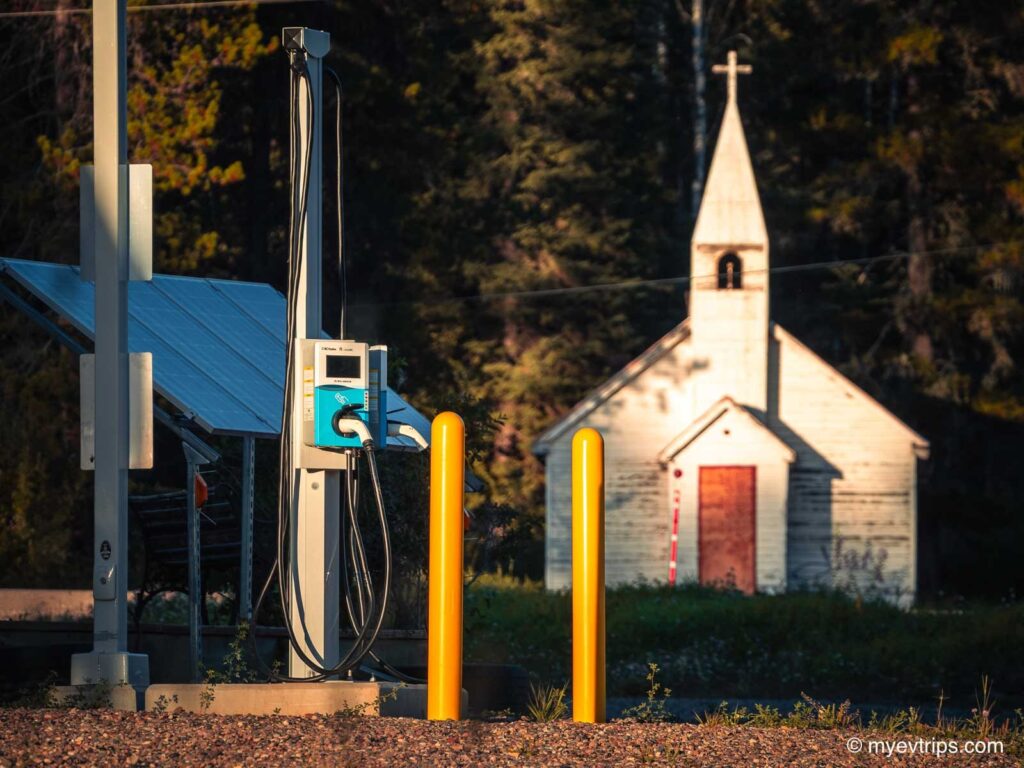
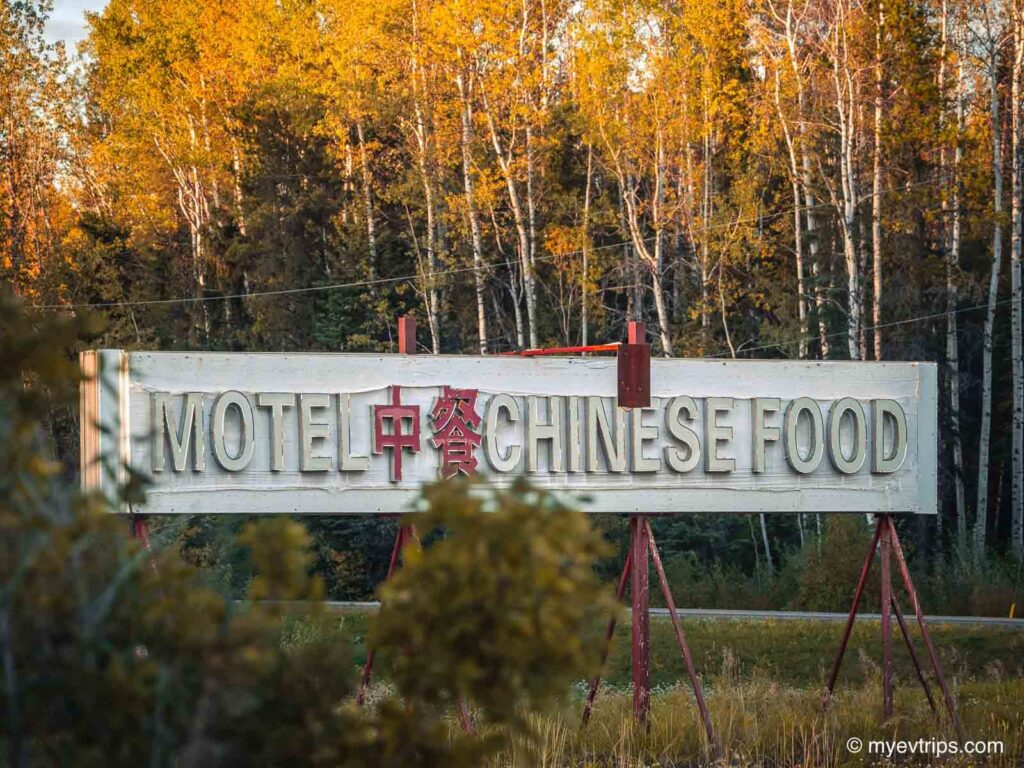
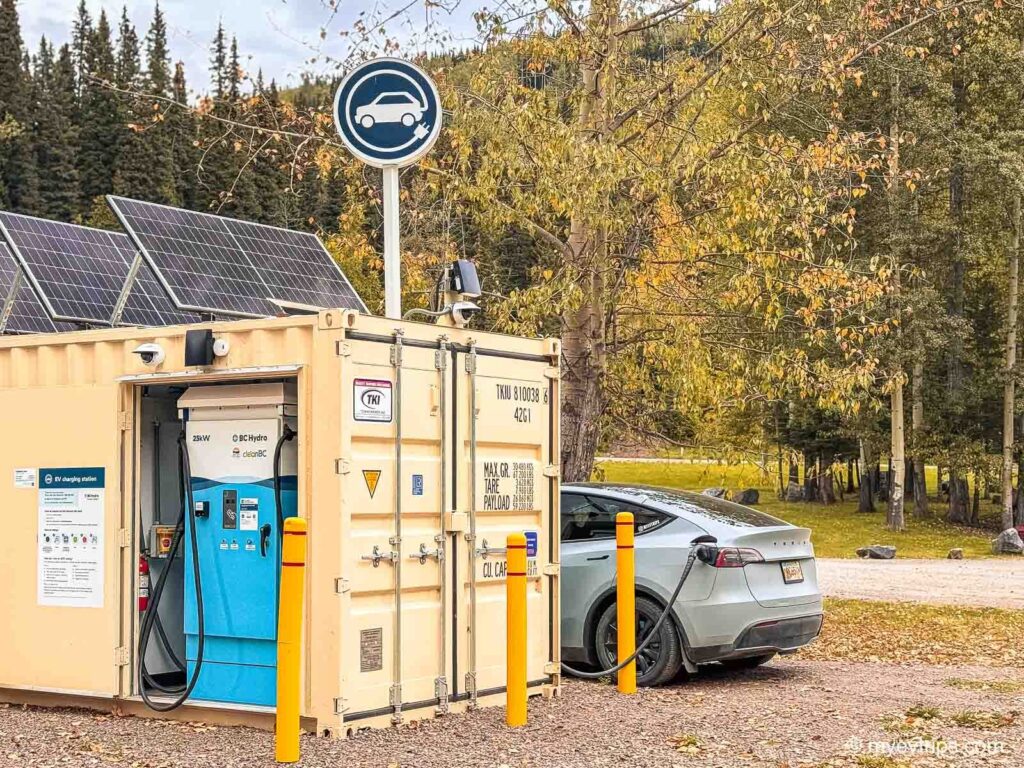

Unfortunately, I forgot about the time zone change and rolled in at 2:45 AM. Not ideal. Even worse, I passed several deer and a moose en route—a good reminder not to drive at night in wildlife-heavy areas.
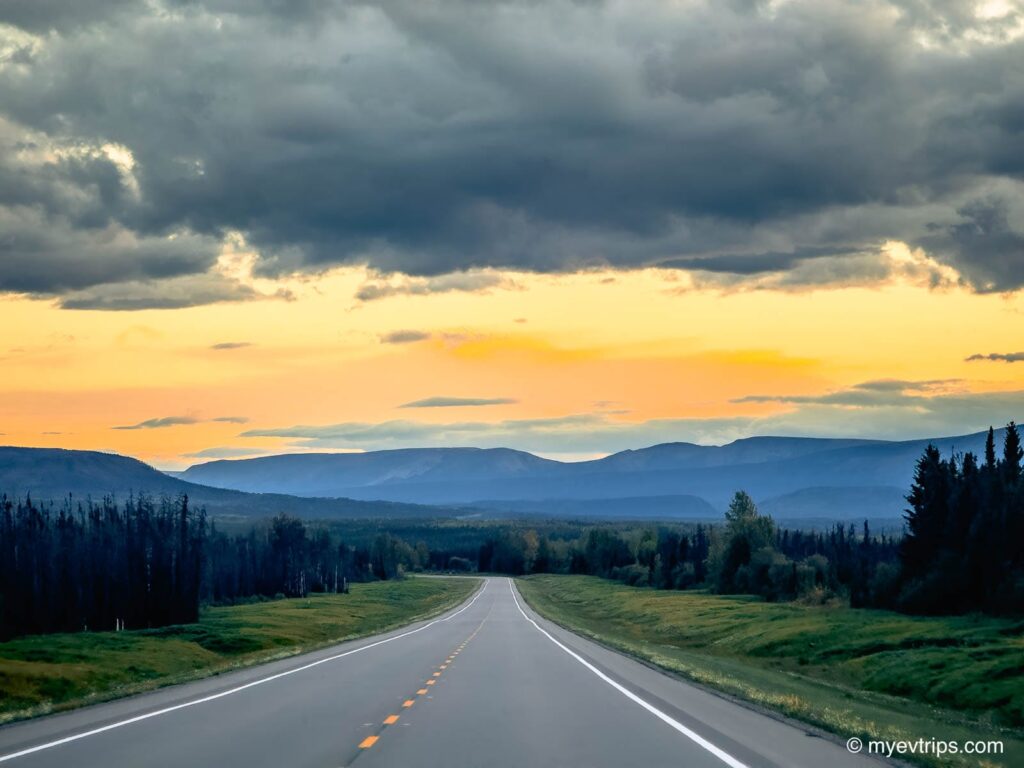
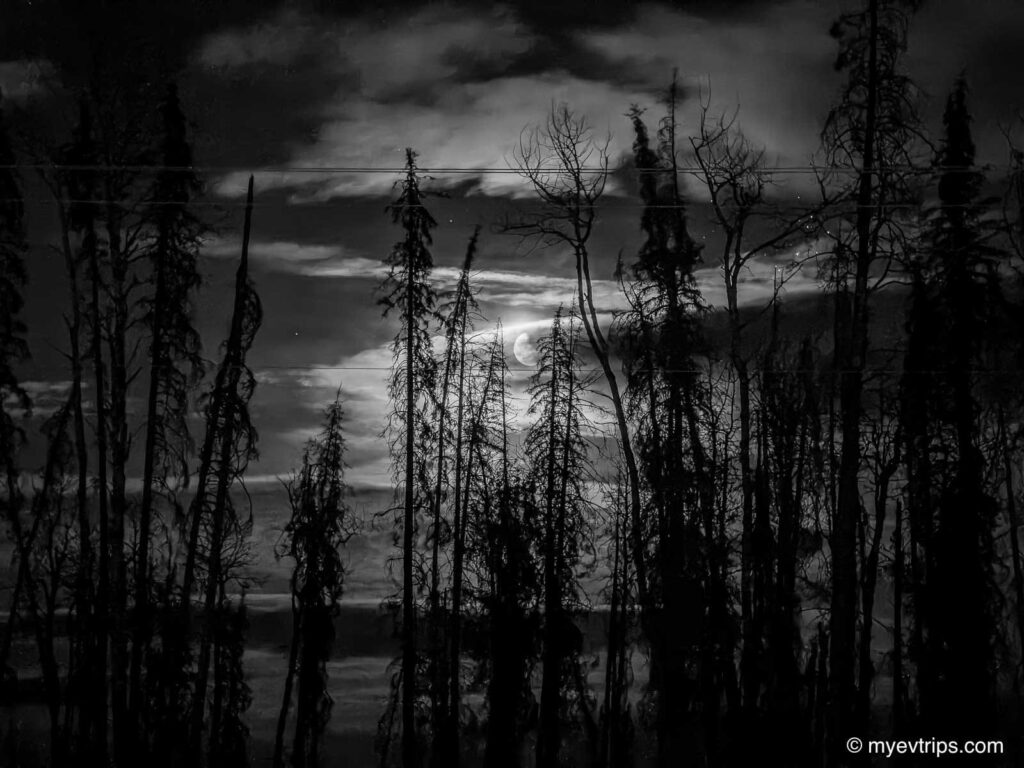
Grand Prairie to Jasper to Home
Taking advantage of some downtime in Grande Prairie, I ducked into a tire shop to finally address the highway wobble I’d been fighting since the Dempster.

While getting my tires swapped onto the same rims (I’d been running one on a winter rim), the techs suggested removing the hubcaps to blast out any remaining mud. And they were right—this stuff really clung on. After a third aggressive wash, the wobble was finally gone.

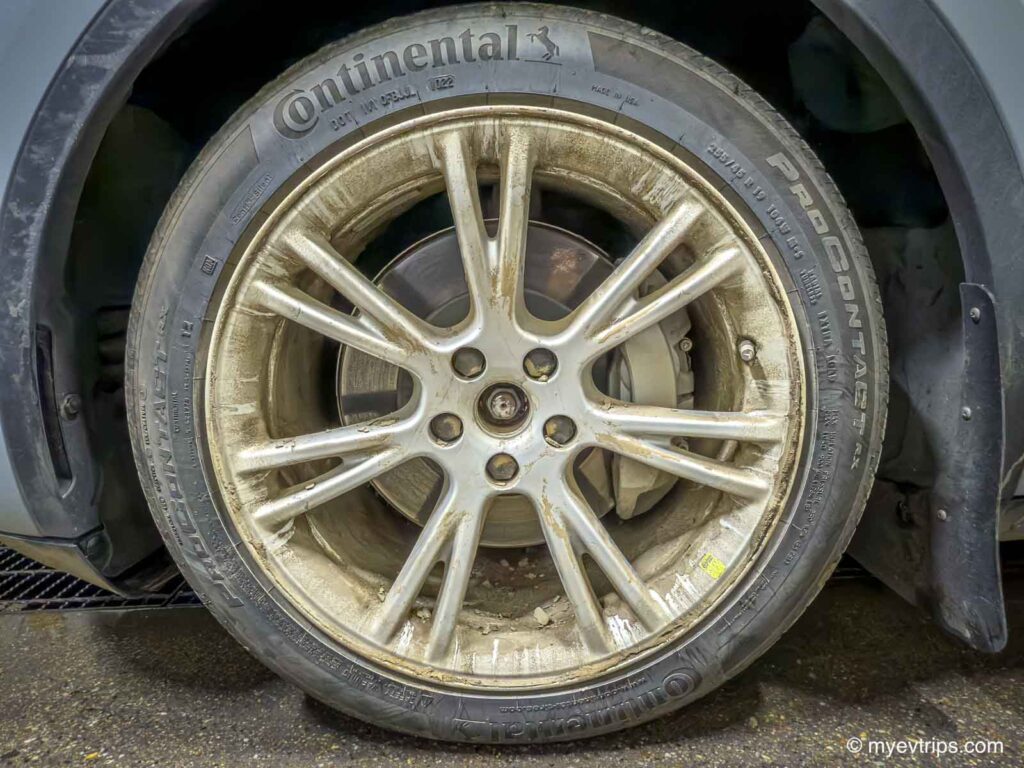

As highlighted in my post ranking Canadian provinces and territories by EV friendliness, Alberta is still pretty barren when it comes to charging infrastructure—especially once you leave major centres. Rolling south, I made use of a free L2 charger at an AMA location before heading to a brand-new Supercharger site.
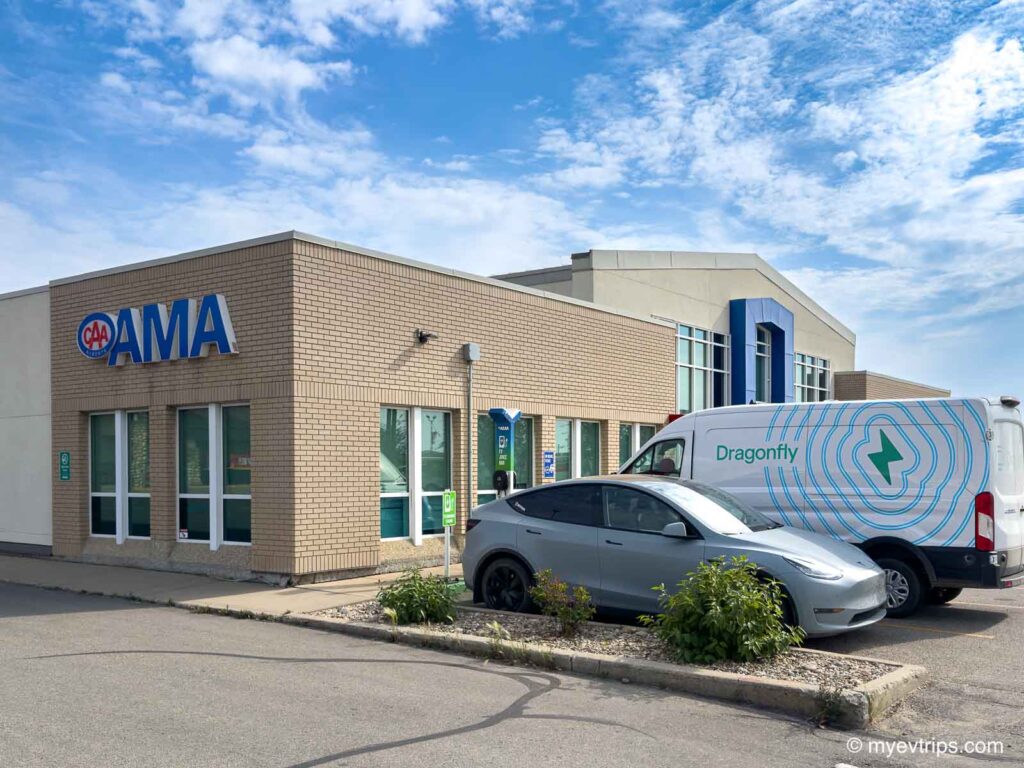
Unfortunately, it wasn’t operating all that well: inconsistent speeds, stalls glitching in and out, and nothing you’d want to rely on for a long-range push.

Jasper was well beyond the range I had left, so an overnight charge wasn’t optional—I had to top up enough to reach the next reliable chargers. Otherwise, I’d be forced to backtrack all the way to Hinton for an L2, which would’ve added hours I really didn’t want to burn.
So camping for the night wasn’t just a break; it was strategic. I needed a powered campsite to slow-charge overnight and guarantee I could make it to Jasper without doubling back.

I continued south along Highway 40—a route I had never taken before—toward Jasper and, with no reservation, rolled into a nearby campground where I used a 30-amp extension cord adapter to trickle-charge through the night.

Camping at Pierre Grey Lakes Provincial Park turned out to be a happy accident—it was actually the final open night of the season. I enjoyed a nice little camp out before calling it a night.
I woke to a glassy, mist-covered lake and about 25% battery. Not a full charge, but exactly what I needed to reach Jasper’s chargers without any detours or stress.
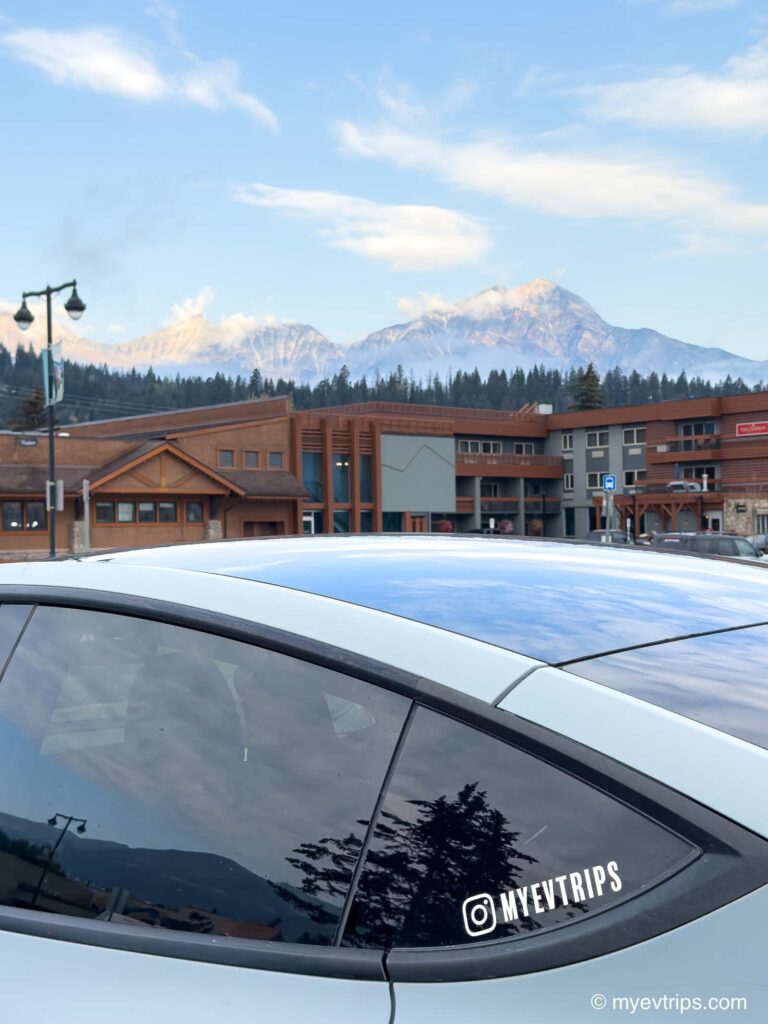
In Jasper, I made use of the free Parks Canada EV chargers while I walked to grab a coffee and breakfast.
From there, I topped up at the free 50 kW Terry Fox rest stop, dismantled my Tesla bed setup (check out my Aerogogo mattress review), and charged again in Clearwater (with a stop at Little Sister Bakery), Kamloops, and Hope.
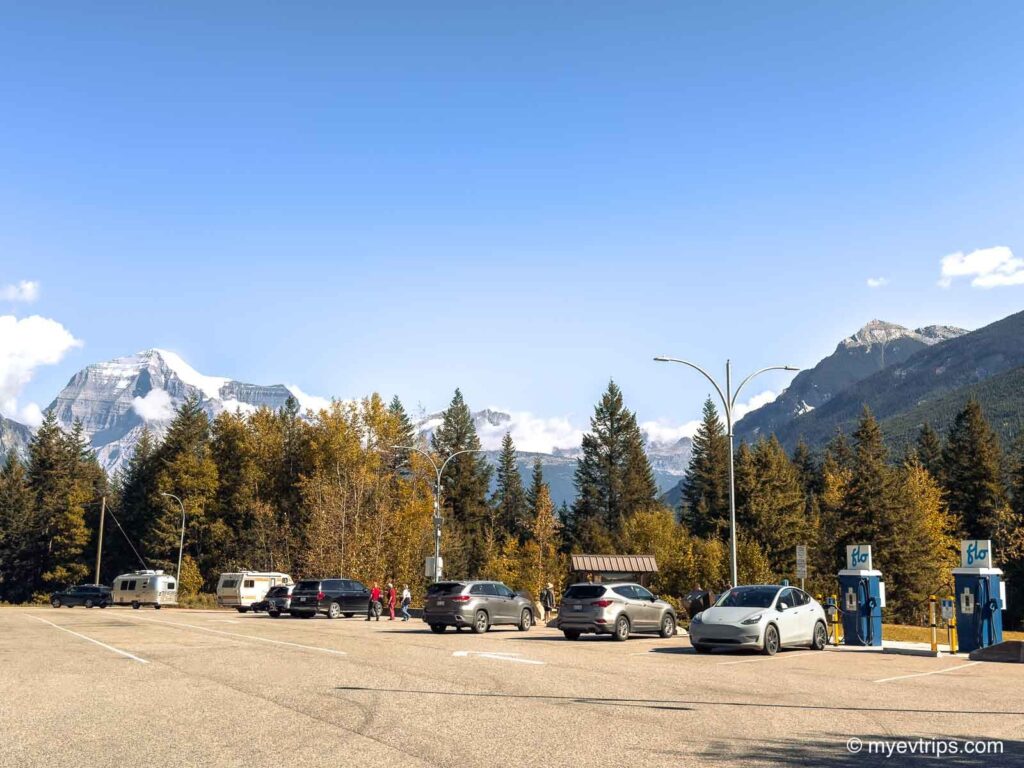
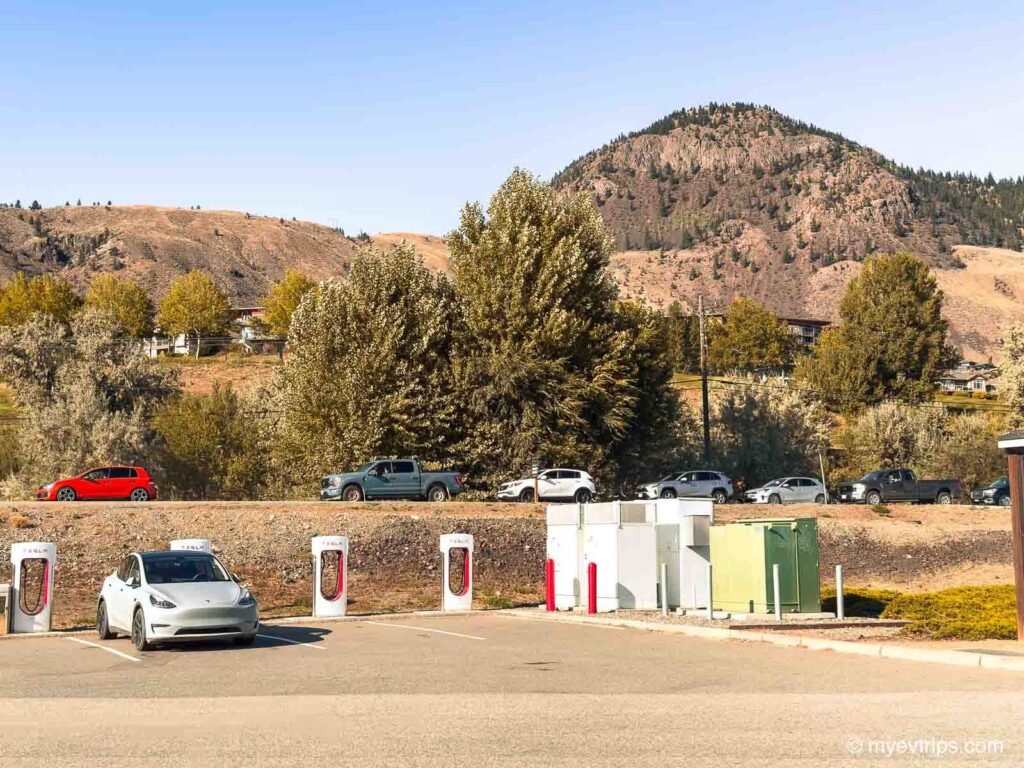
Hope has new high-speed chargers conveniently placed next to a Booster Juice—an essential treat after 6,500 km.
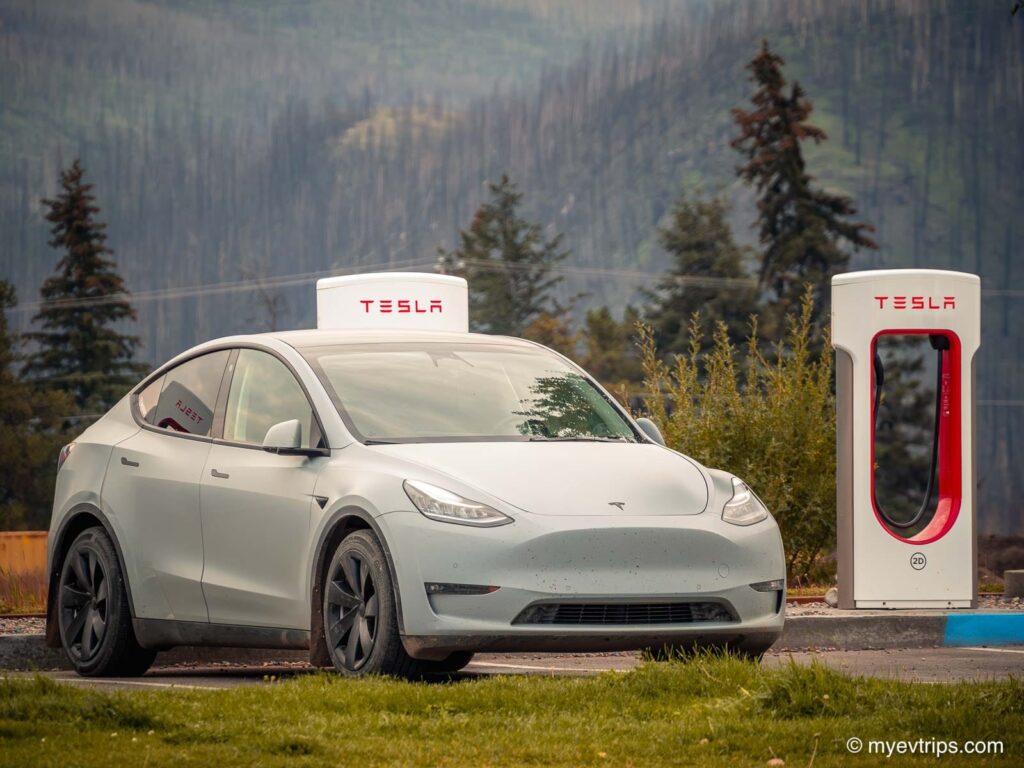
I arrived home with 15% charge left, having driven 6,500 km using just under 1,000 kWh. This unforgettable trip taught me a lot and will only get easier as infrastructure improves.
If you’re planning to drive to the Arctic Ocean, do your research, prepare backups, and always stop to charge if in doubt. Check out more of my EV gear recommendations here.
Final Thoughts on This dempster highway guide
The return portion of my Dempster Highway EV adventure was no less memorable than the way up. From wild northern lights and garage sleepovers to serendipitous hot spring soaks and new EV friends, this is a trip I’ll never forget.

Would I do it again? Absolutely. But I’ll be even better prepared next time and, hopefully, in my new Rivian R2.
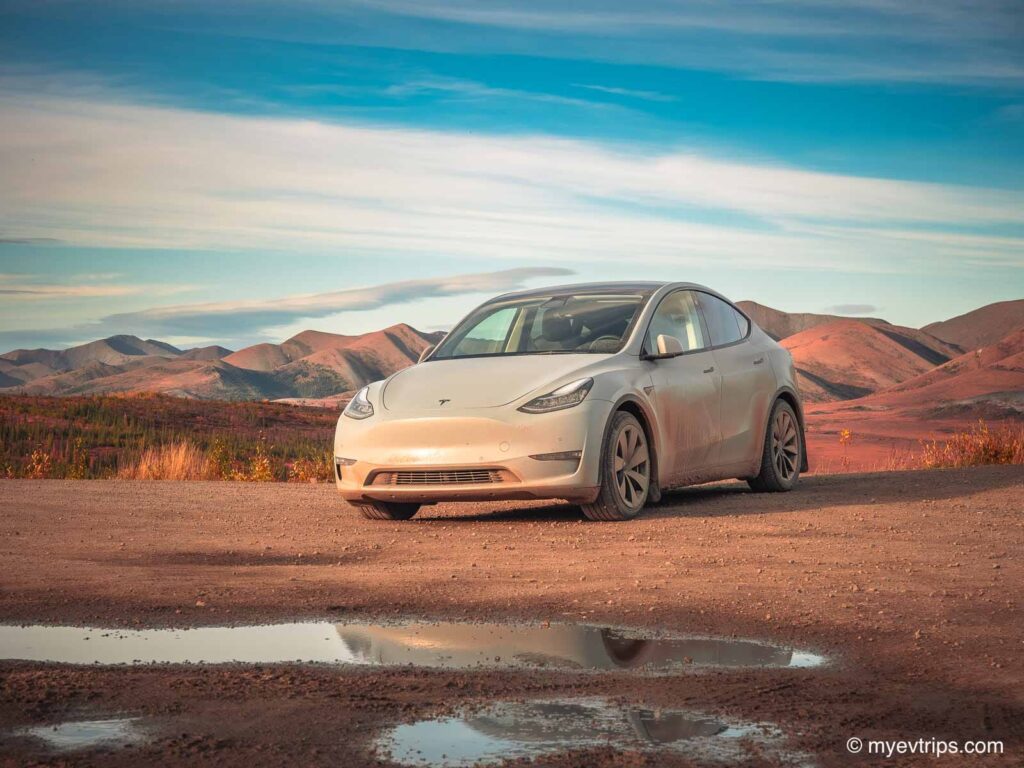
Got questions? Drop them in the comments or connect with me—I’d love to help you plan your own EV road trip to the Arctic.
EV Road Trip on the Dempster Highway
Is it really possible to drive an EV on the Dempster Highway?
Yes—a few EVs have completed the route but, it’s not for the faint of heart. But it requires careful planning, conservative driving, and knowing exactly where reliable charging options are located.
What are the main challenges for EVs on the Dempster?
The biggest obstacles are limited charging availability, unpredictable energy consumption, and rough road conditions. Weather, mud, and elevation changes can significantly affect range.
How reliable are charging options along the route?
Charging is available but not guaranteed. Many stations support only one vehicle at a time, and outages or heavy usage can cause delays. Always have a backup plan—RV parks, 14-50 plugs, and adapters are essential.
Is it safe to drive the Dempster Highway at night?
It’s not recommended. Wildlife is common, visibility is low, and road hazards are harder to spot. Daylight driving is strongly advised for safety.
What gear should I bring for an EV Dempster Highway trip?
Bring a full charging kit (including TT-30 and 14-50 adapters), a tire repair kit, full size spare (or two!), warm clothing, food, water, and basic camping gear. Being self-sufficient is key if you encounter delays or weather changes.





